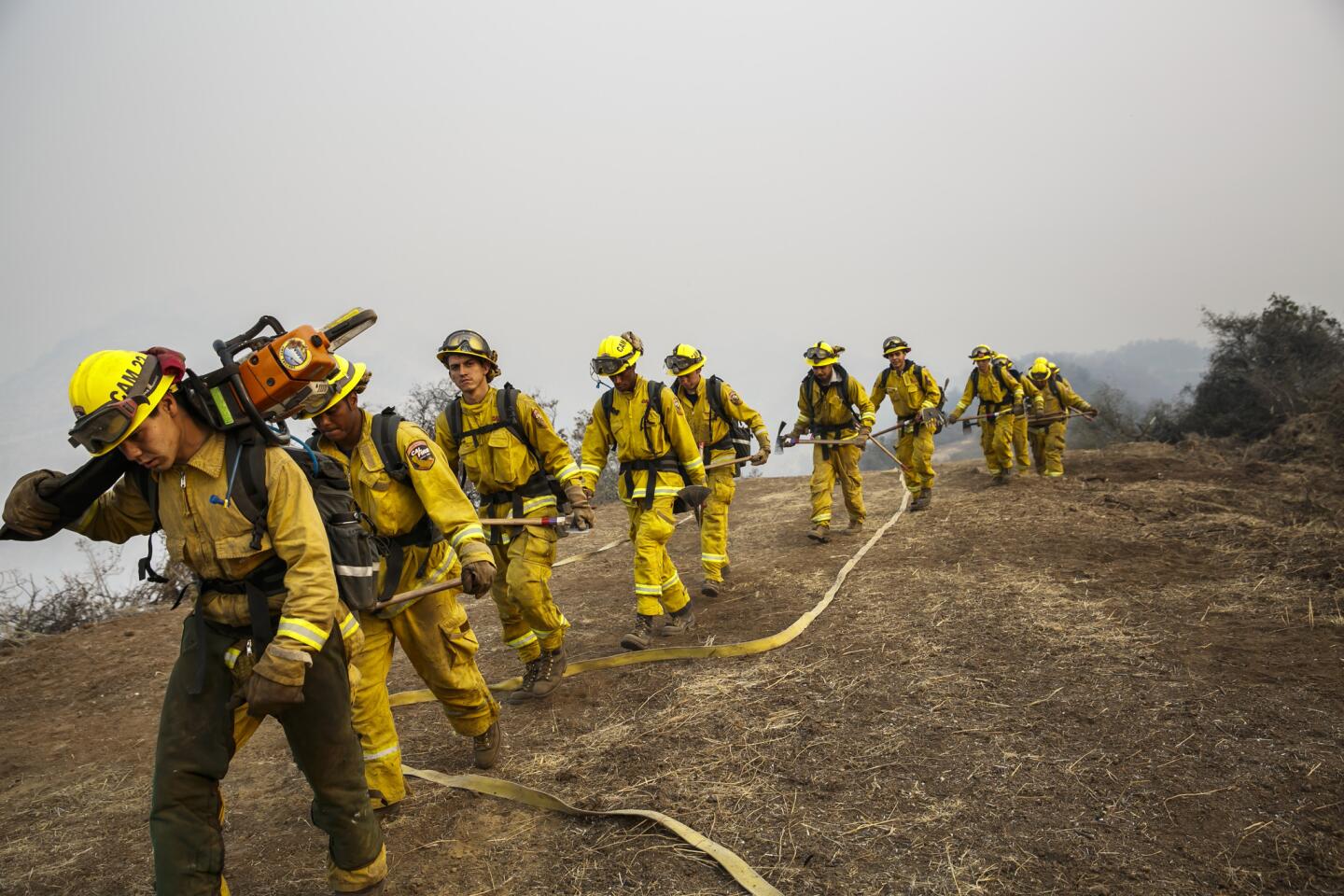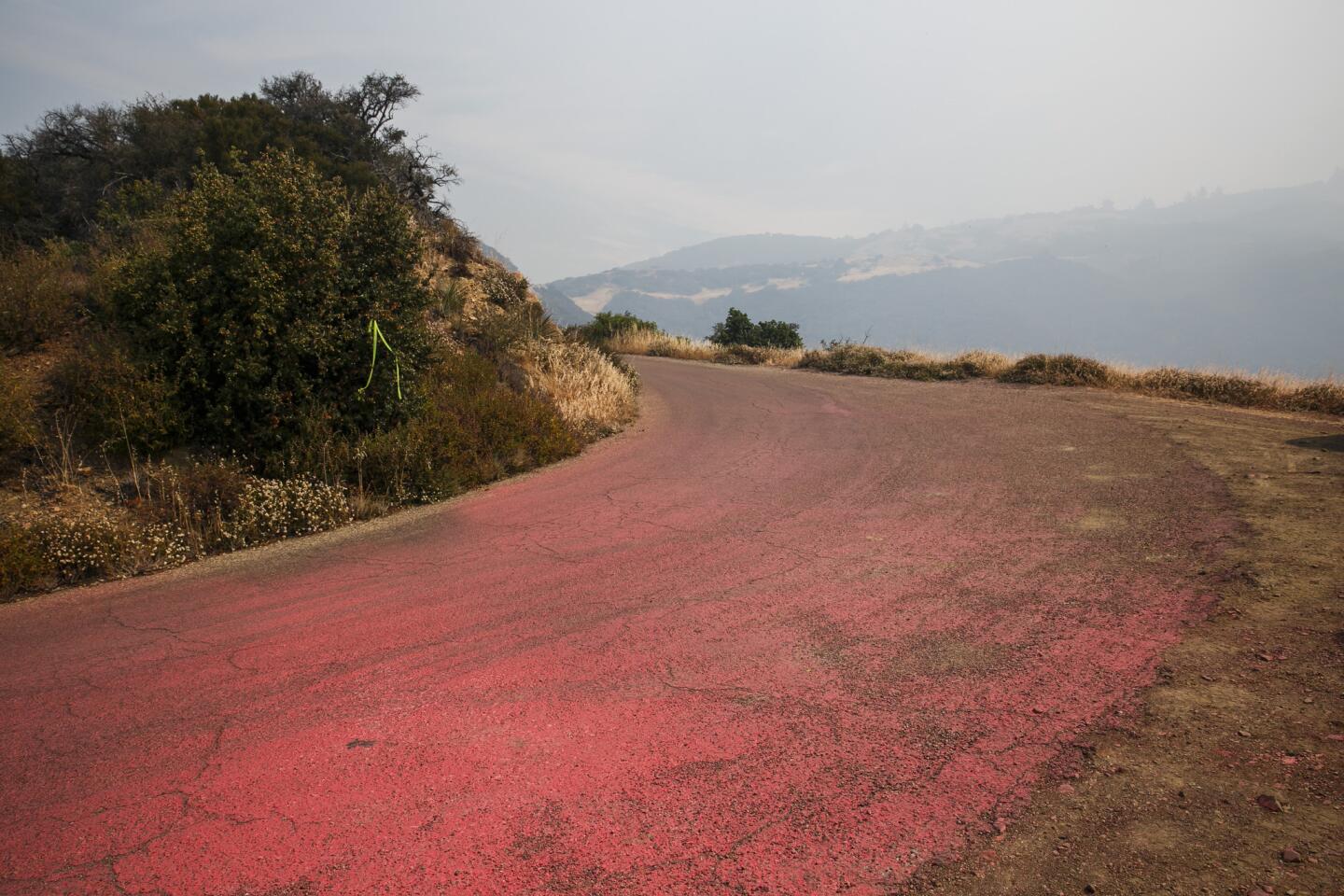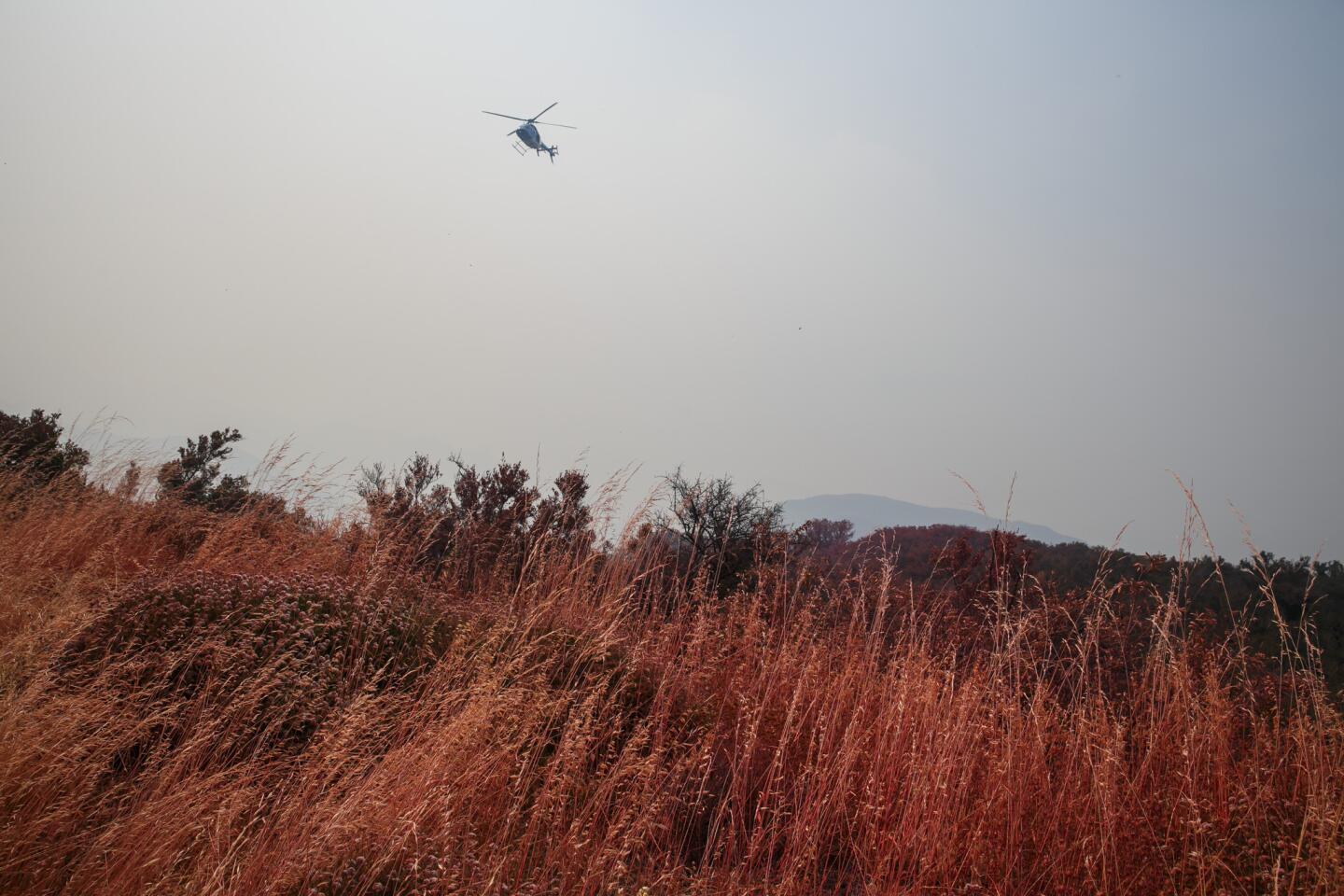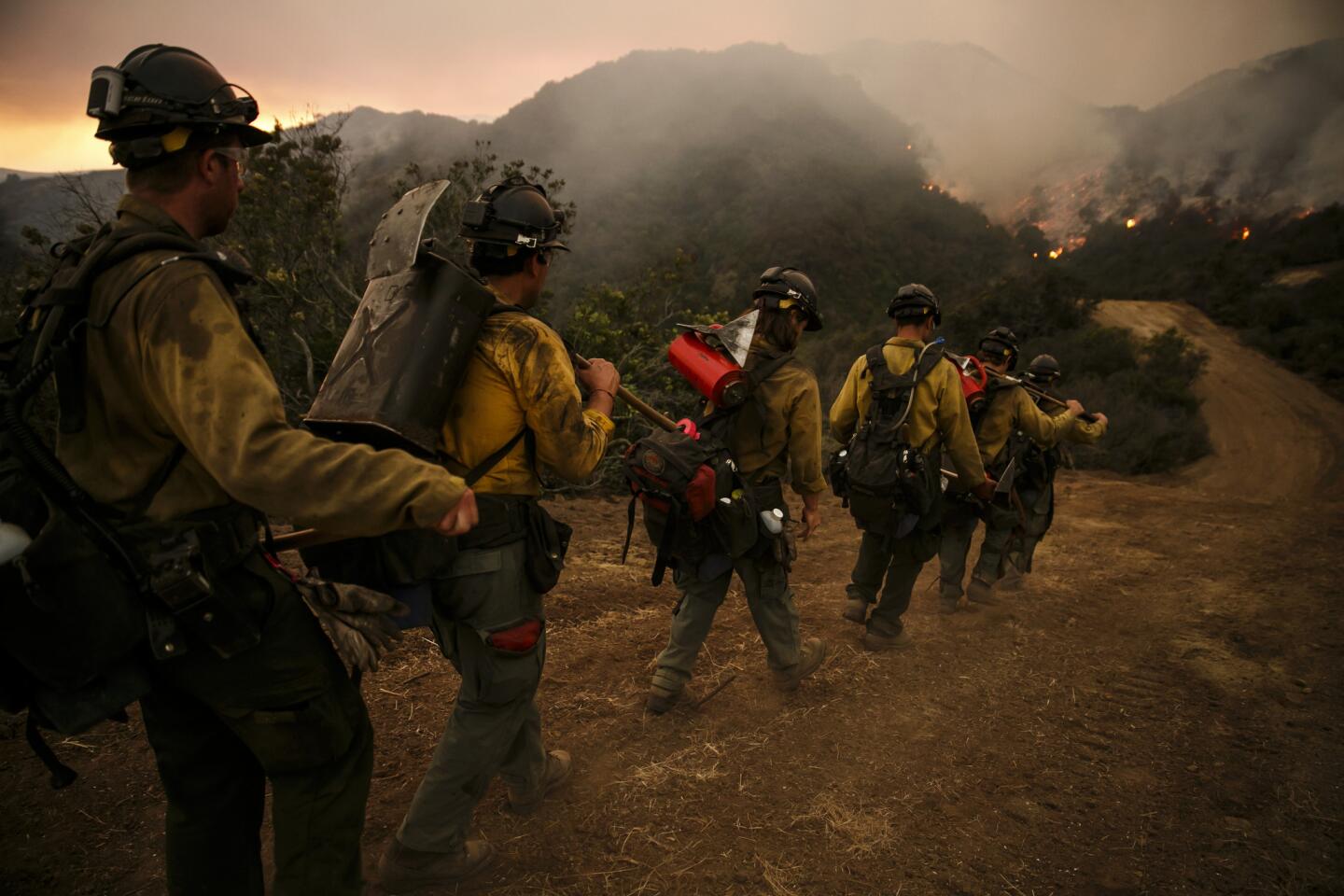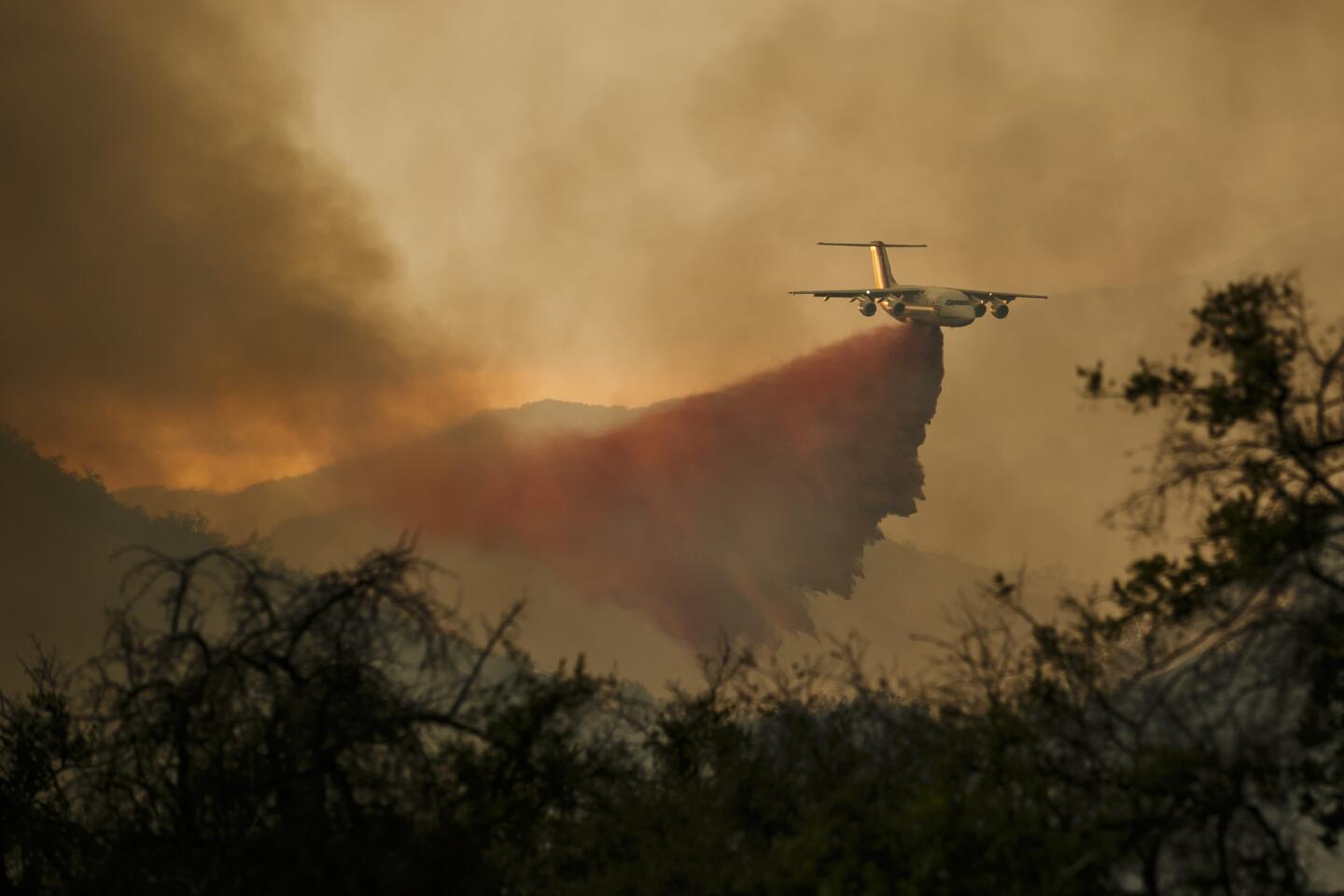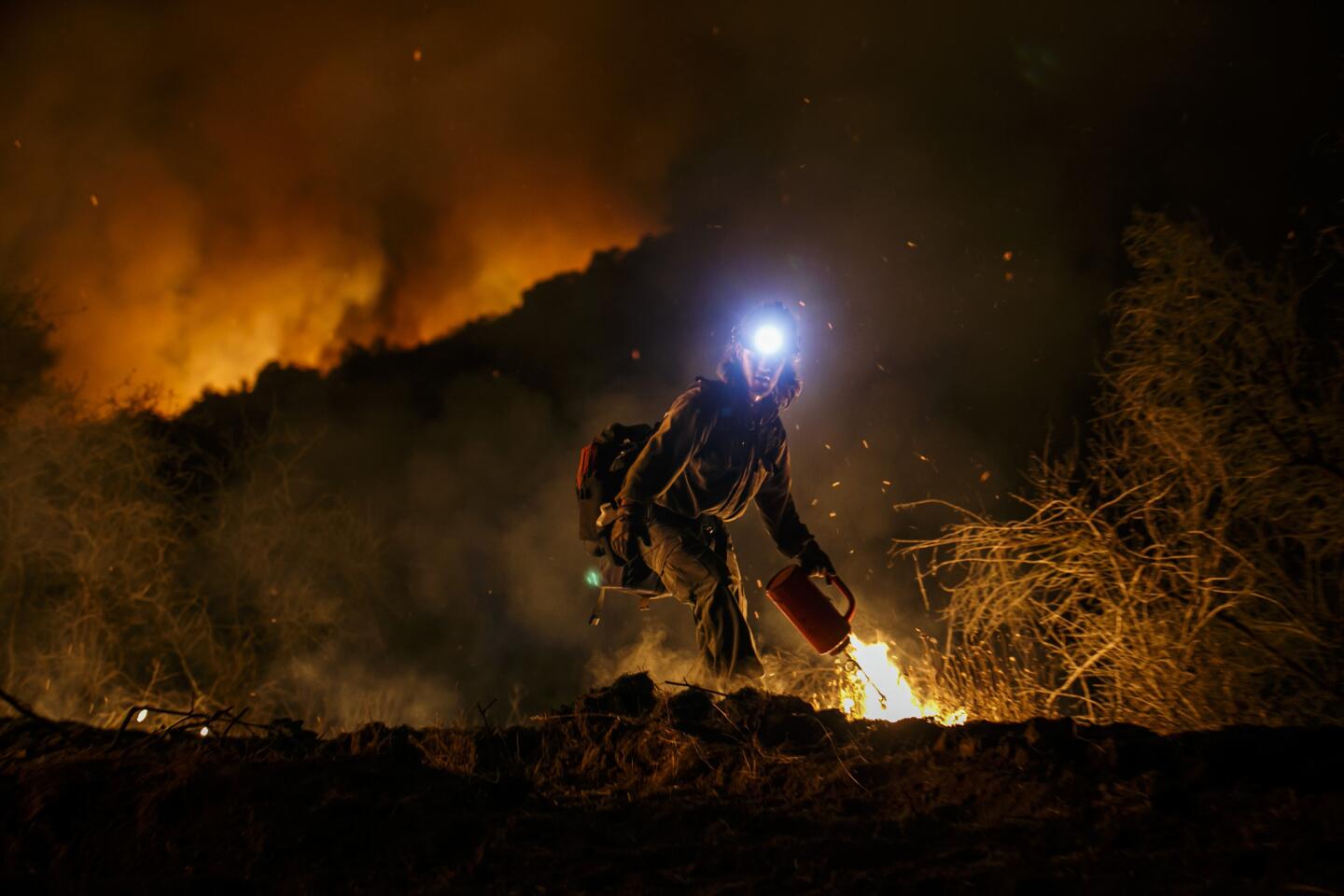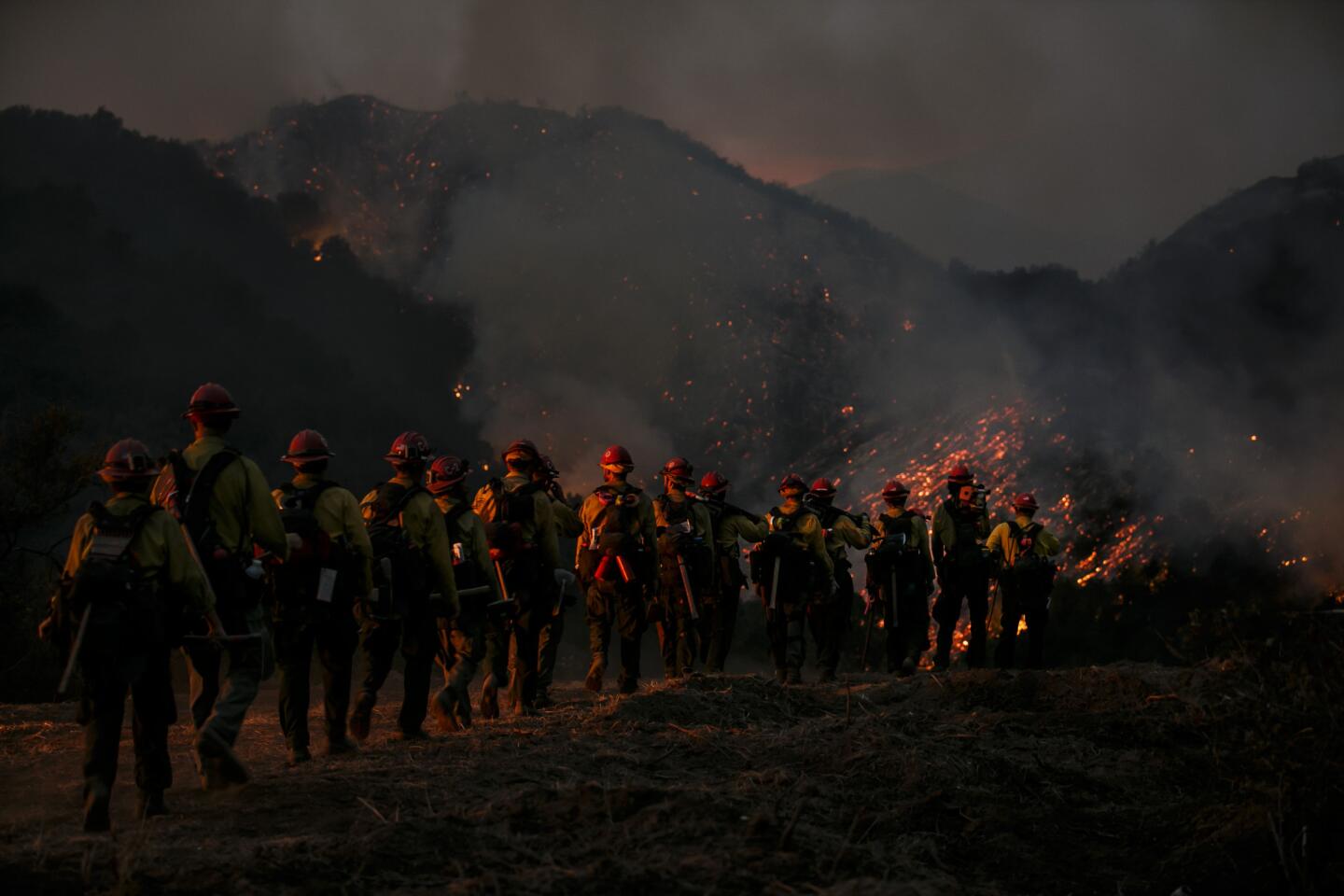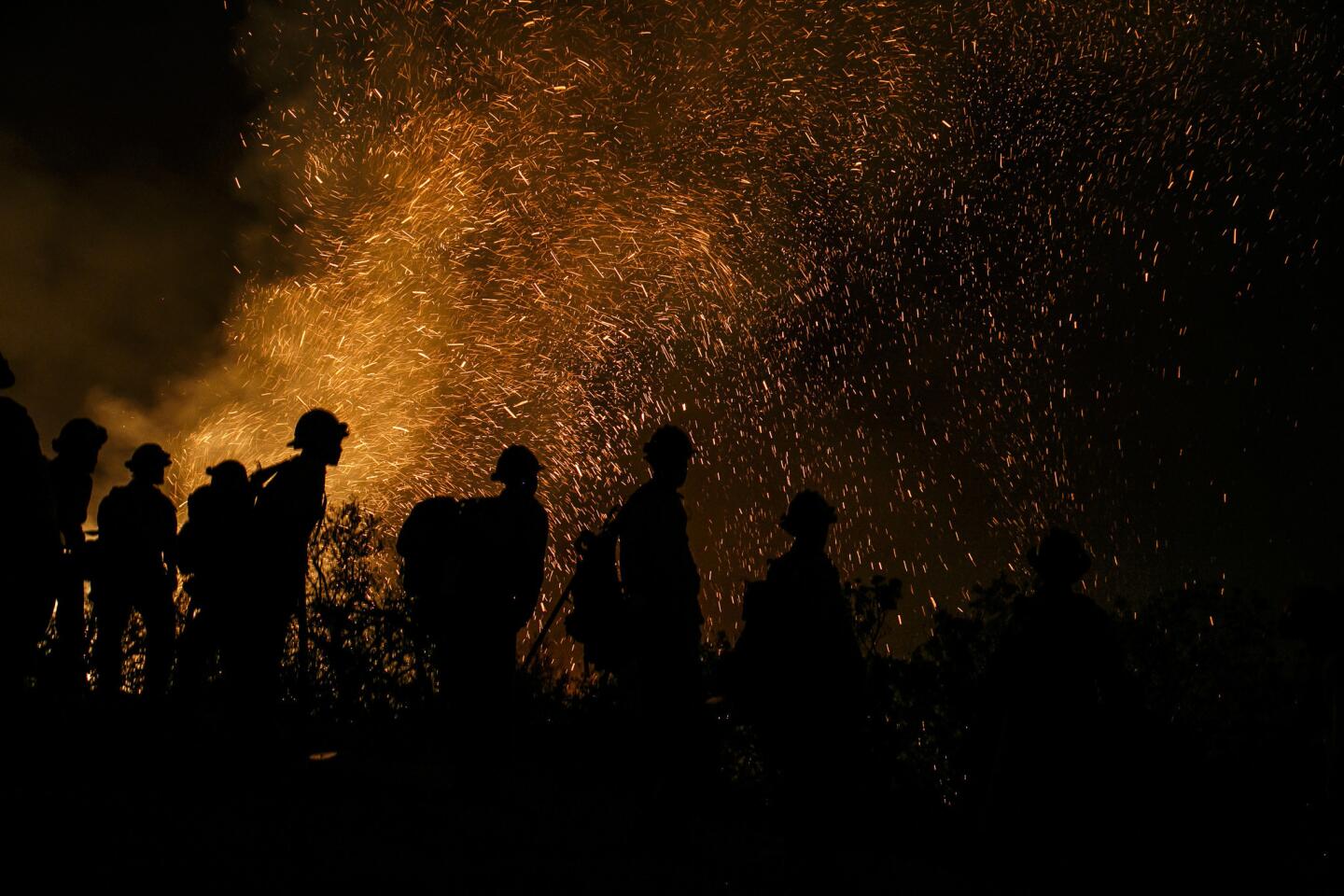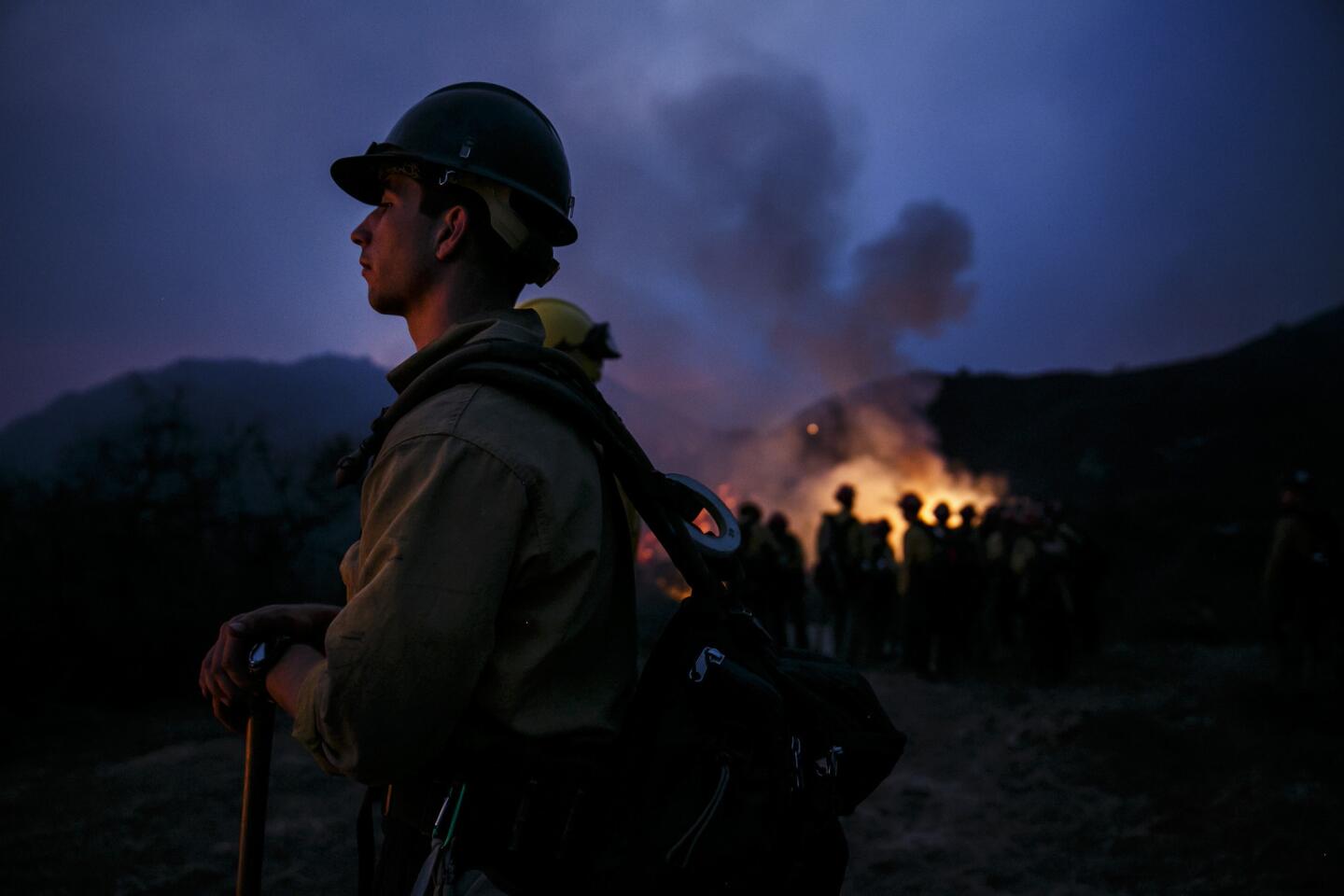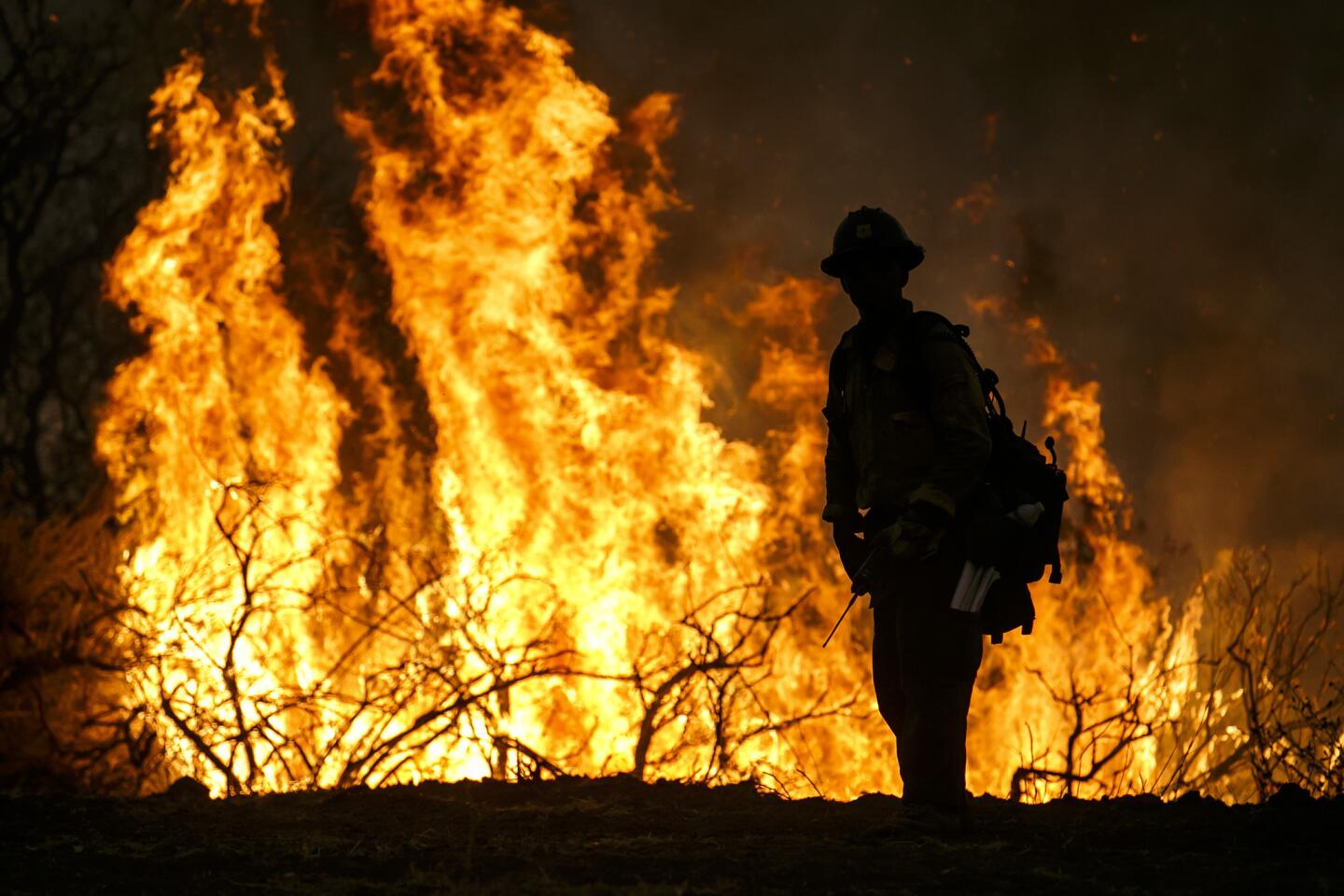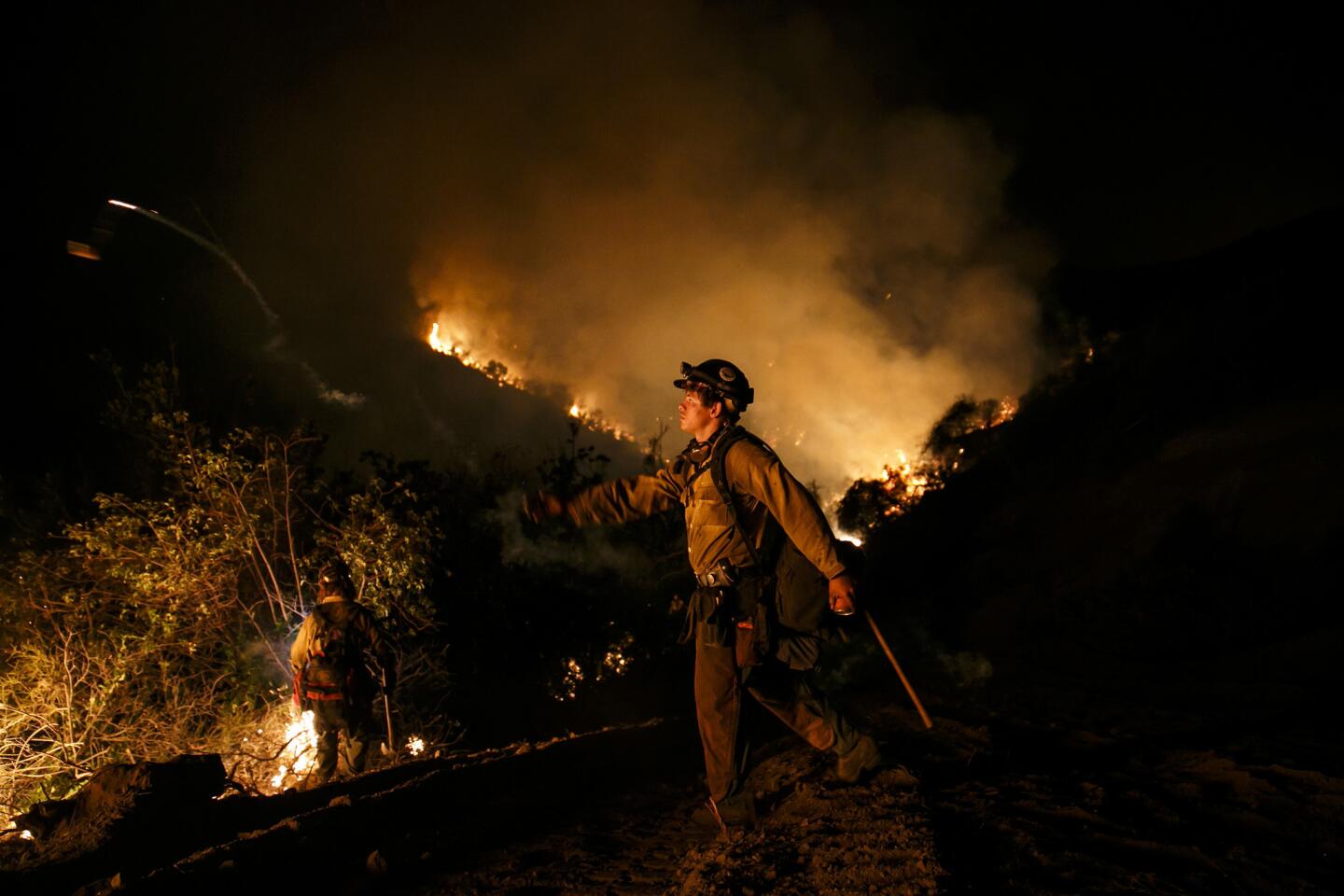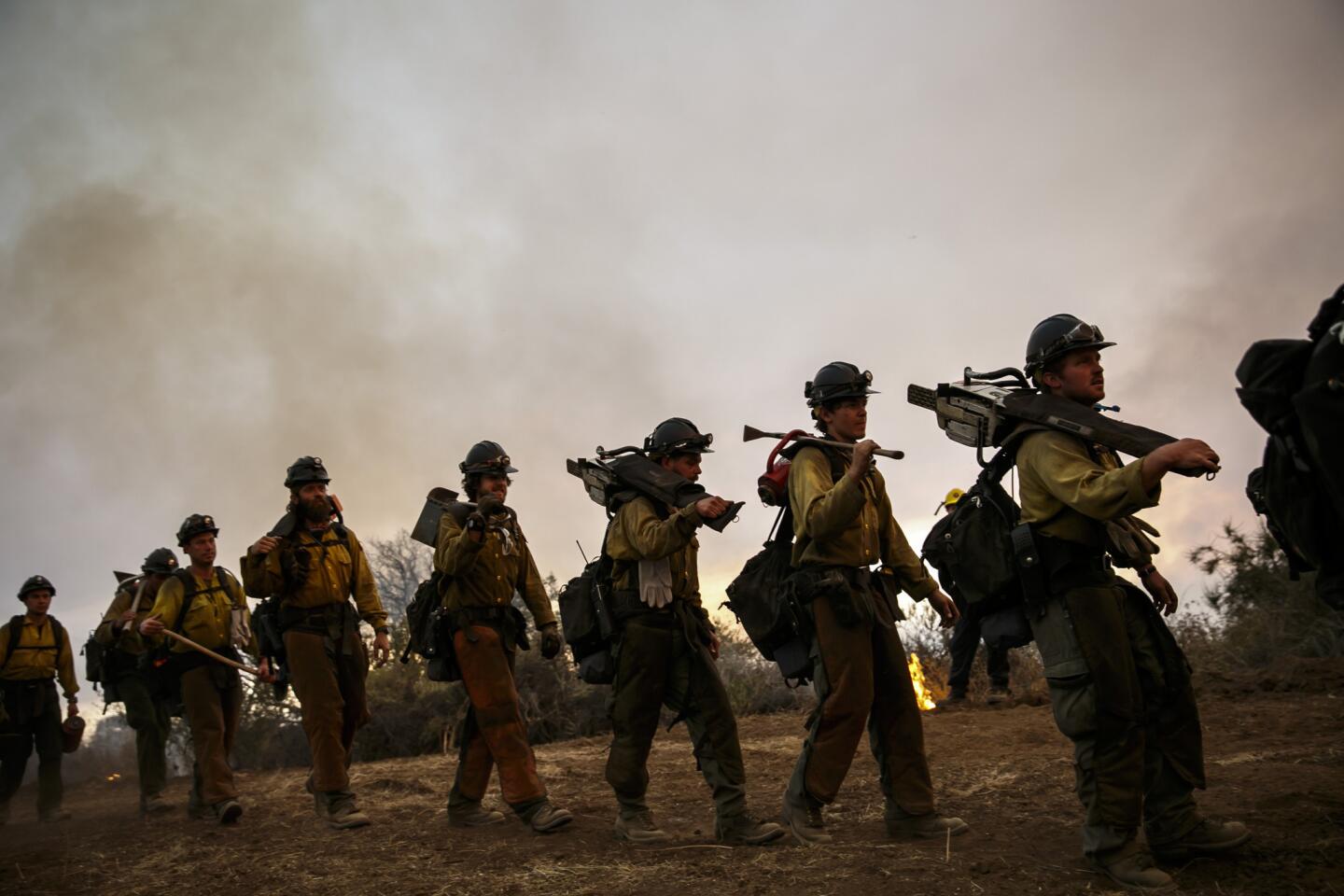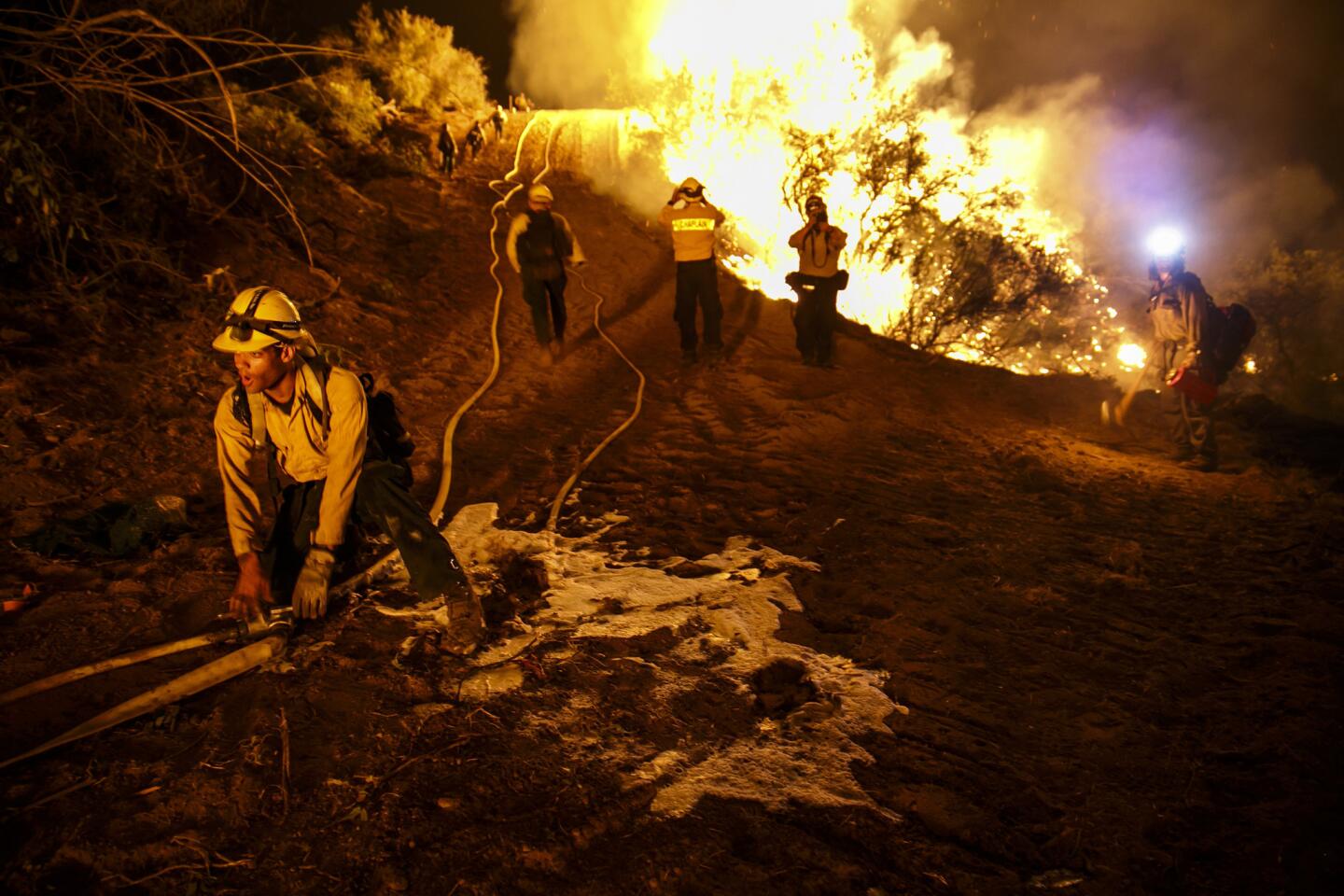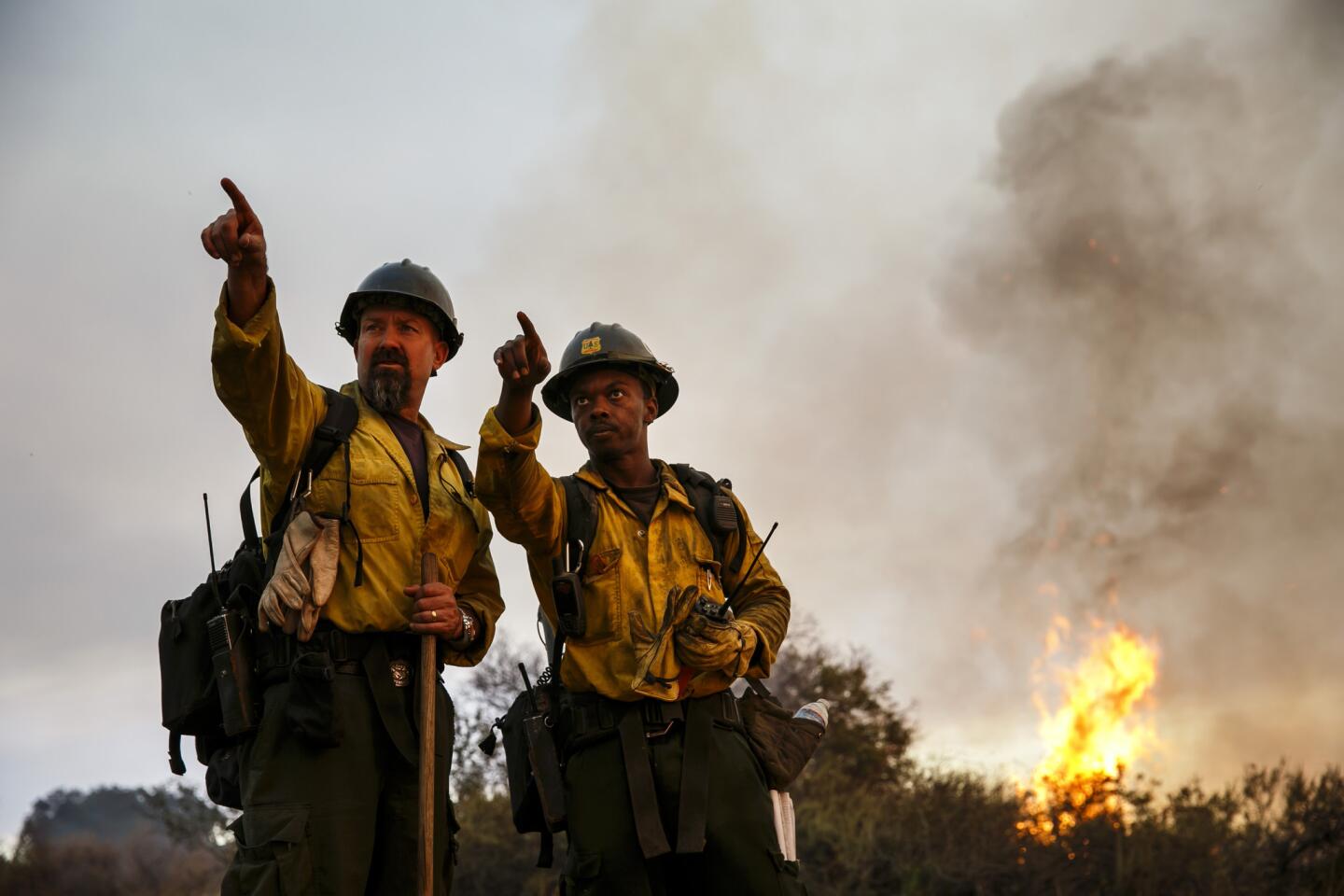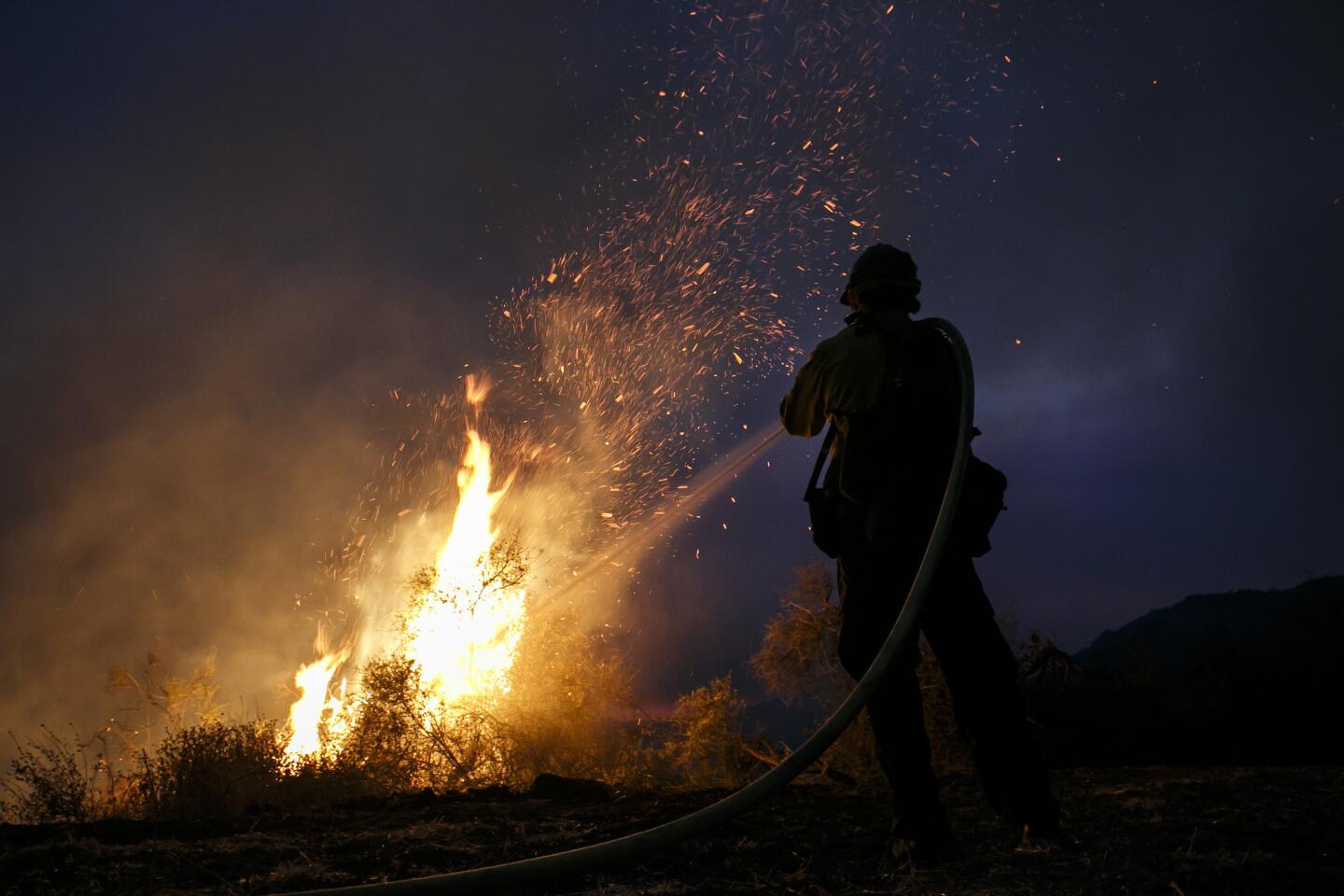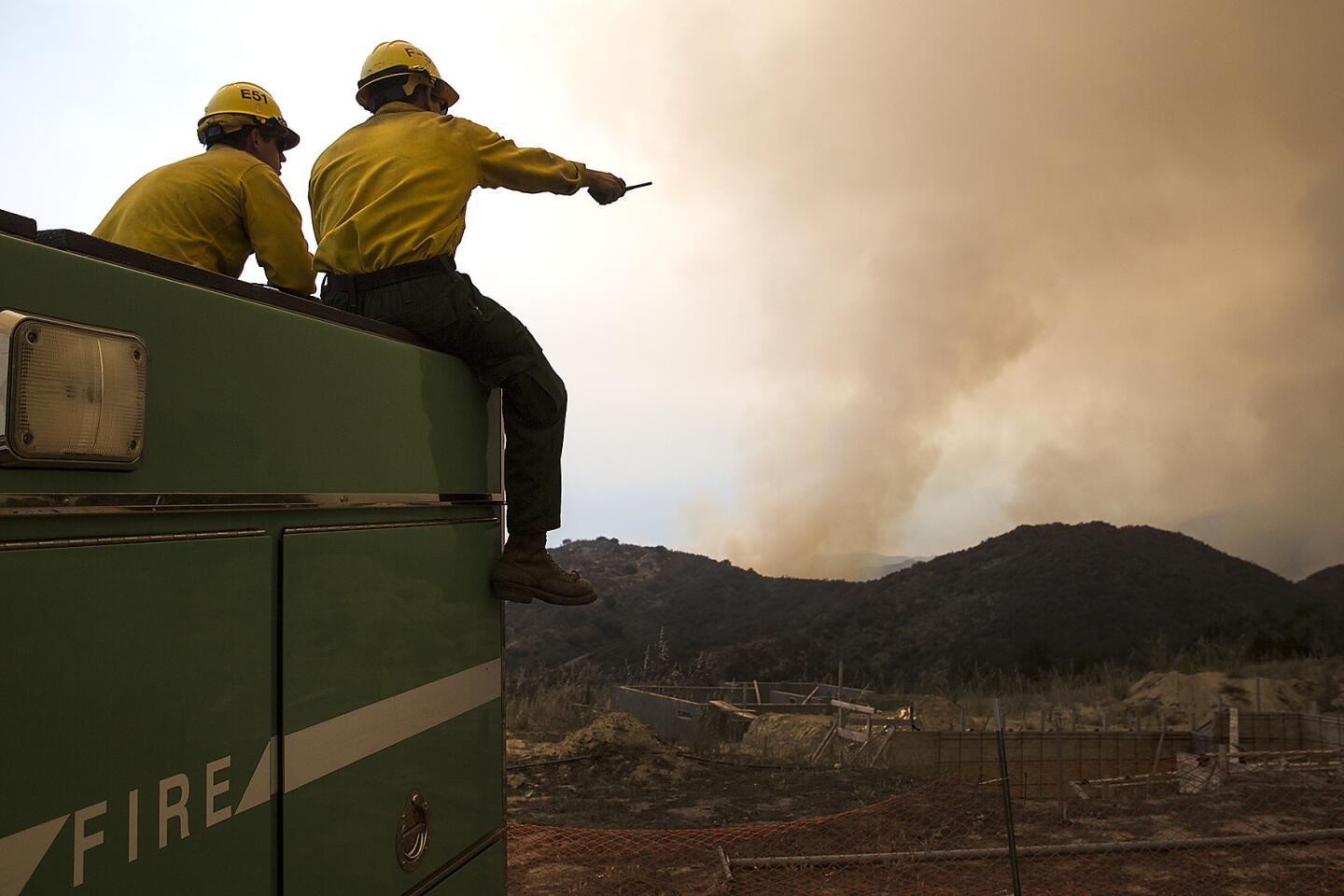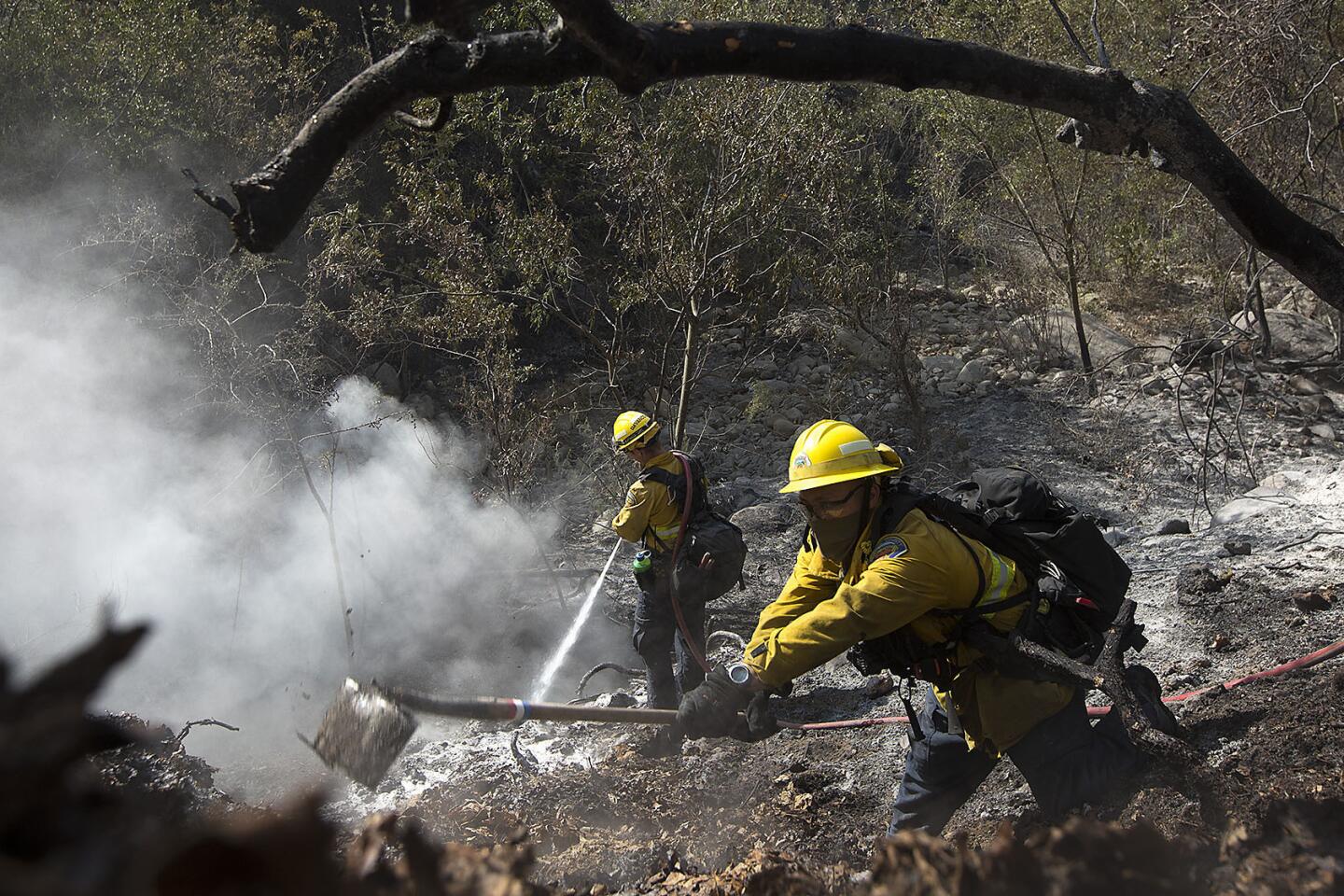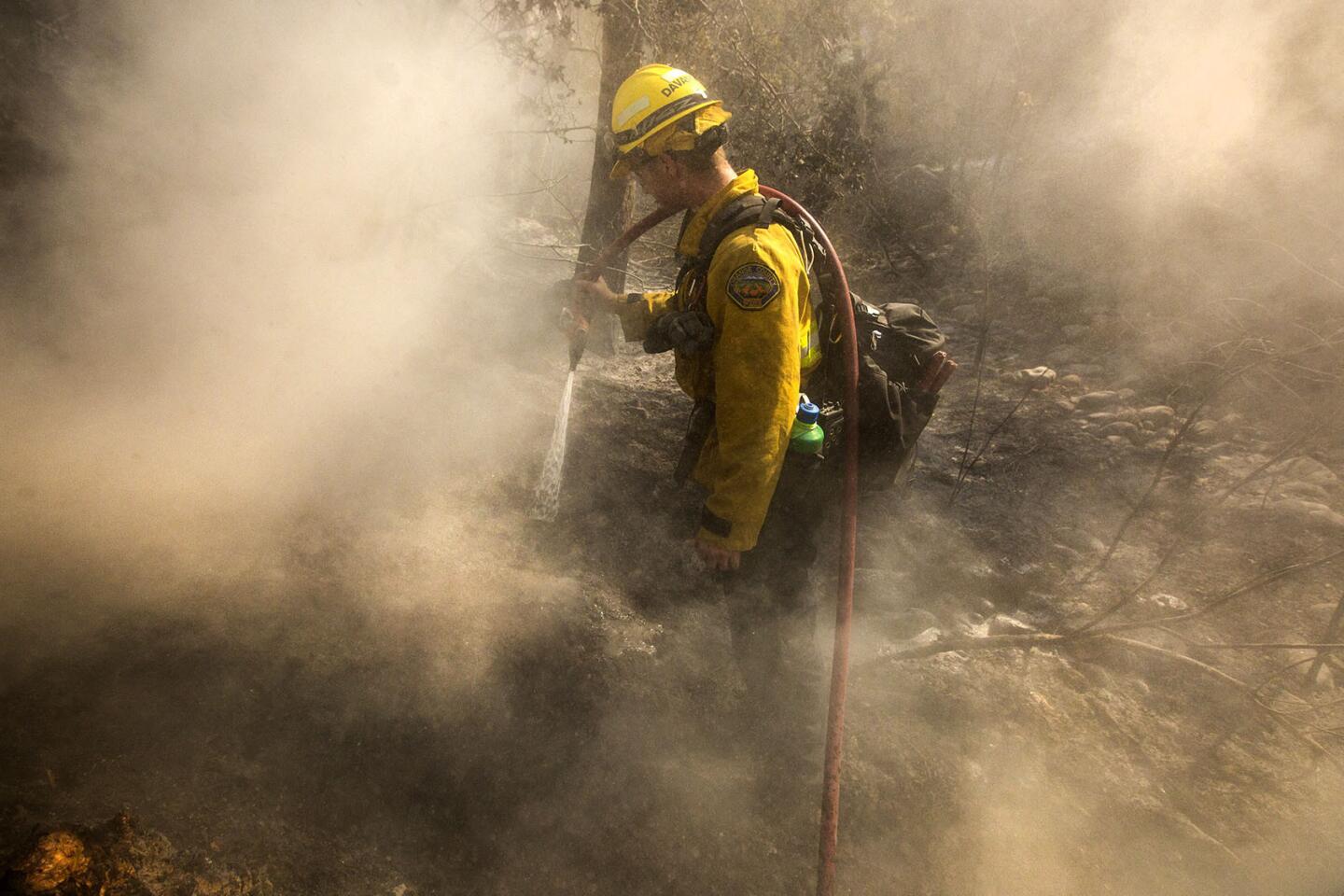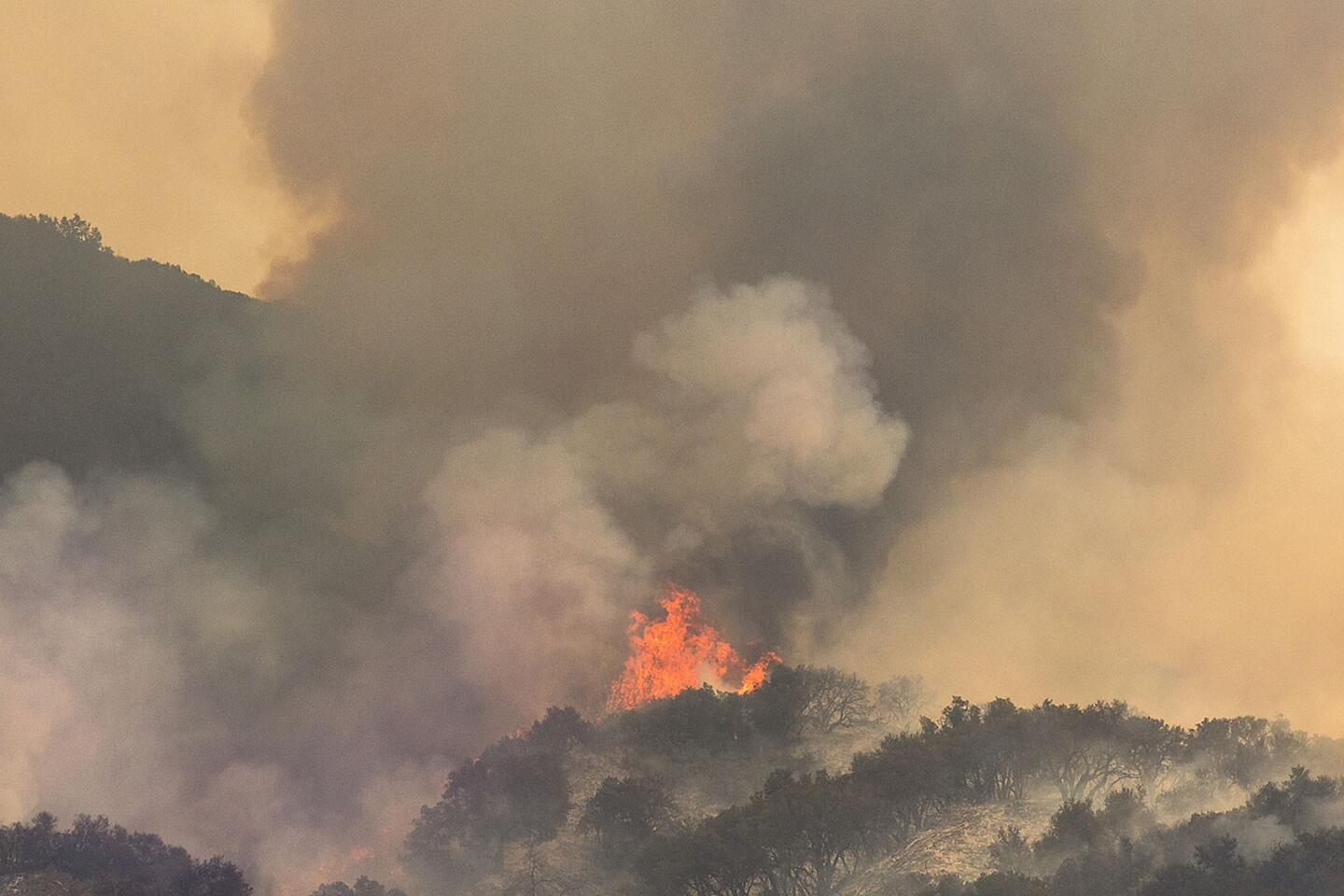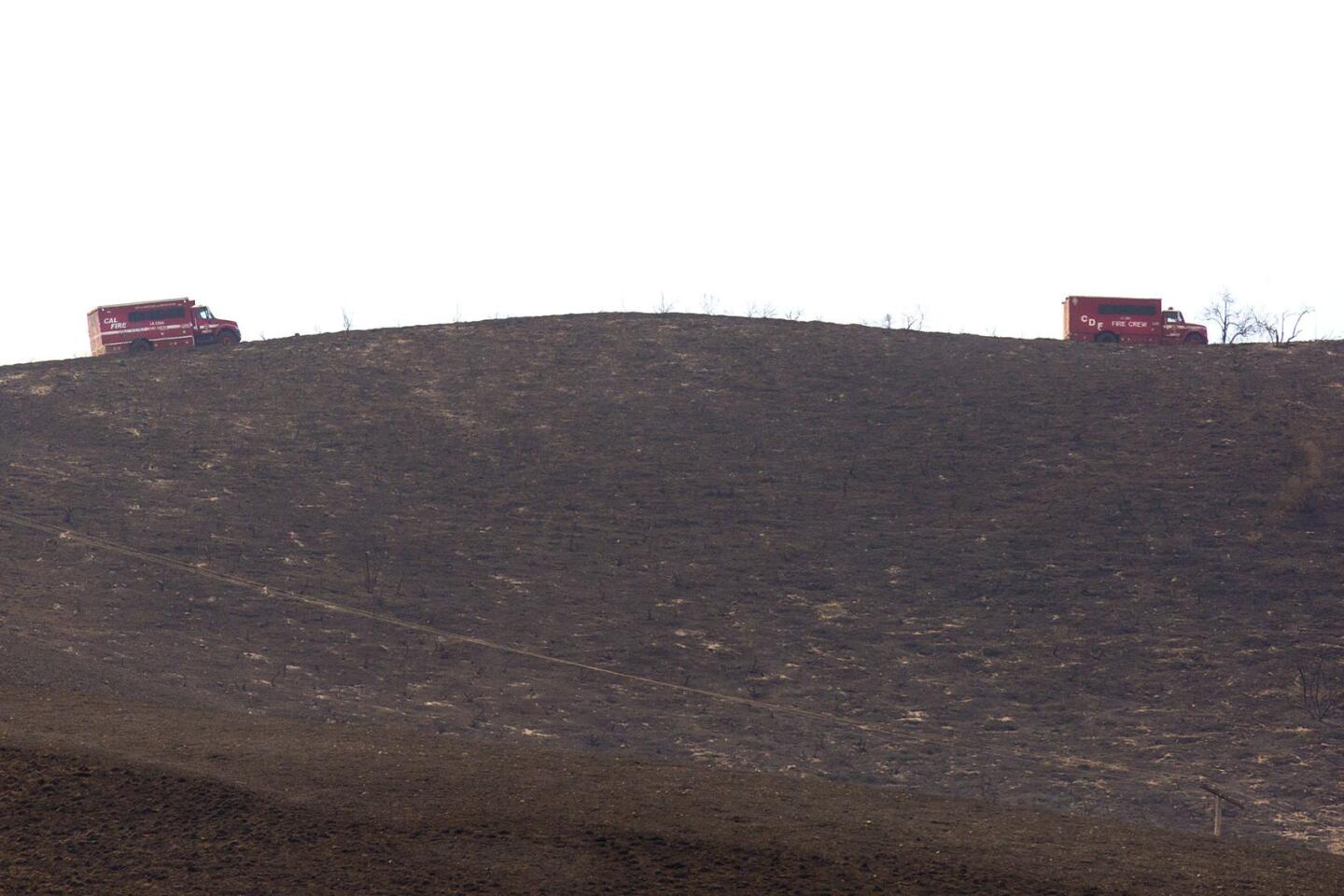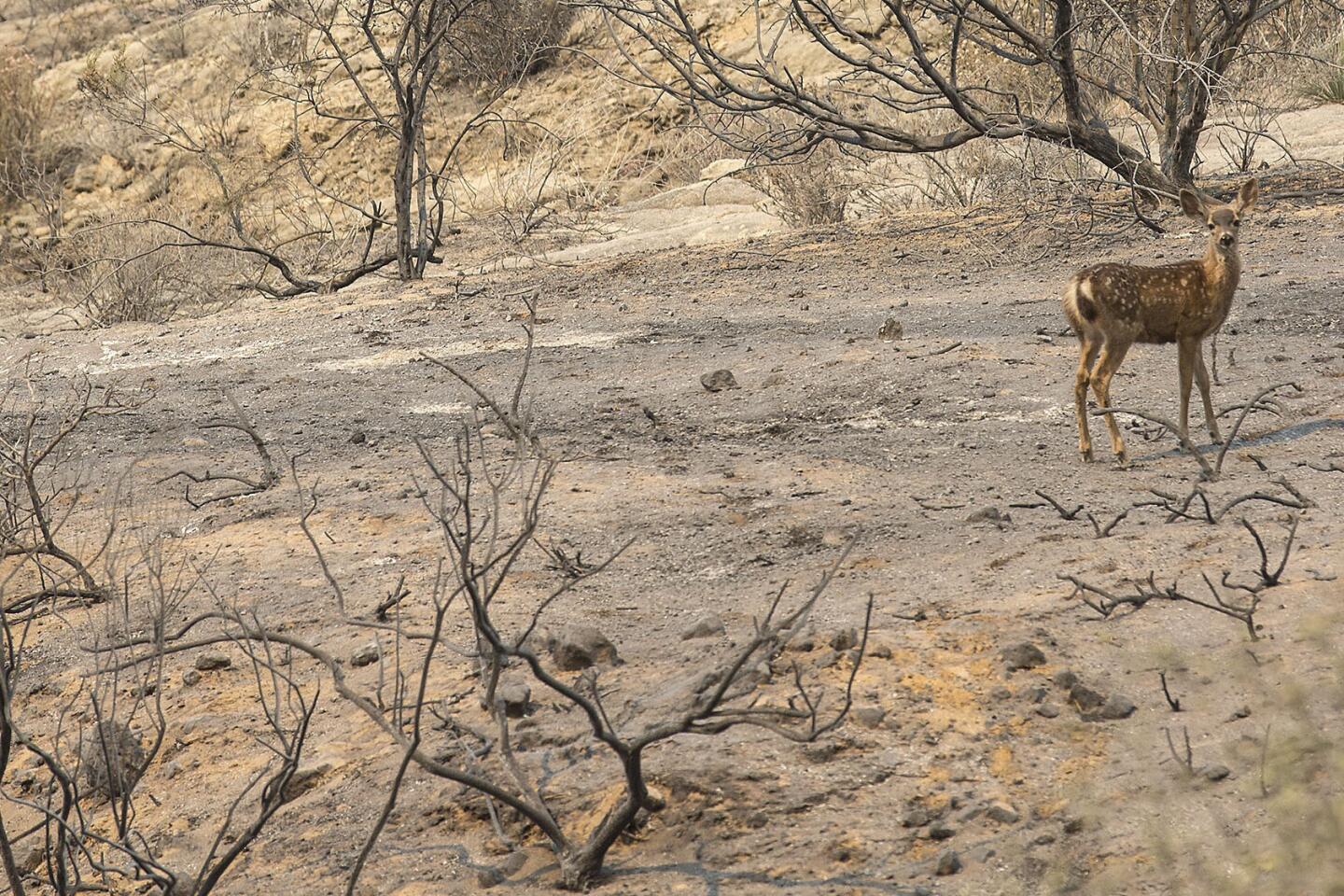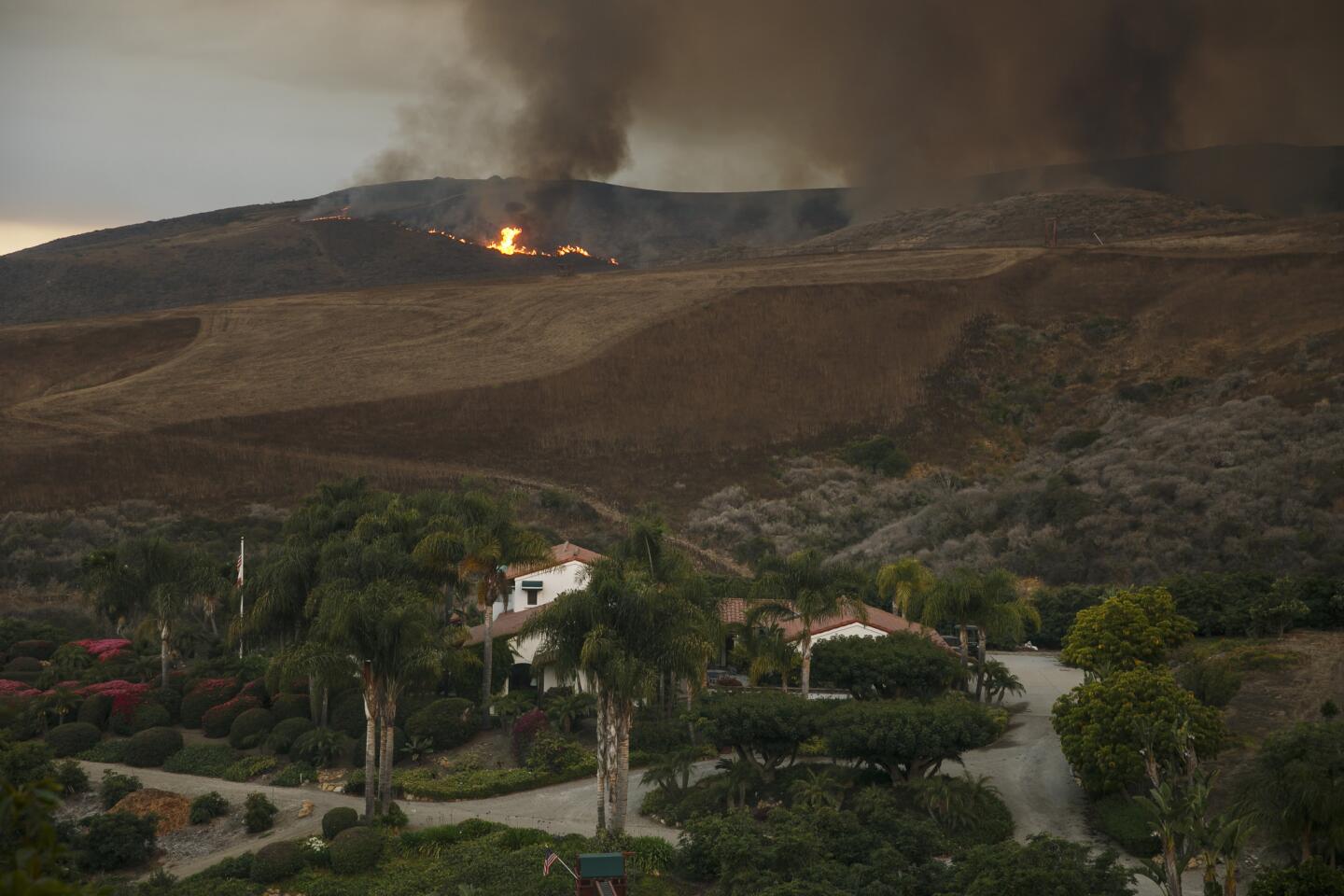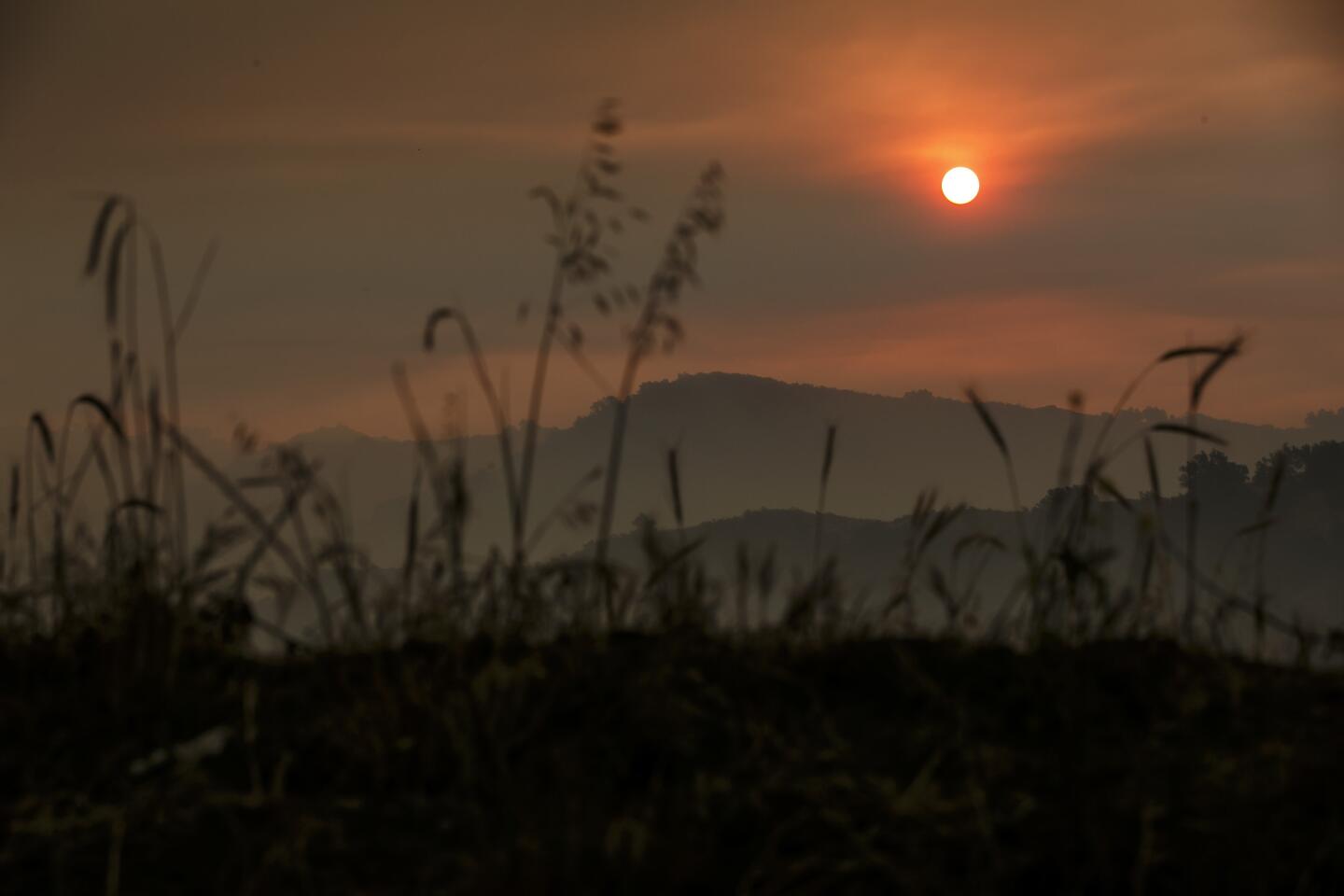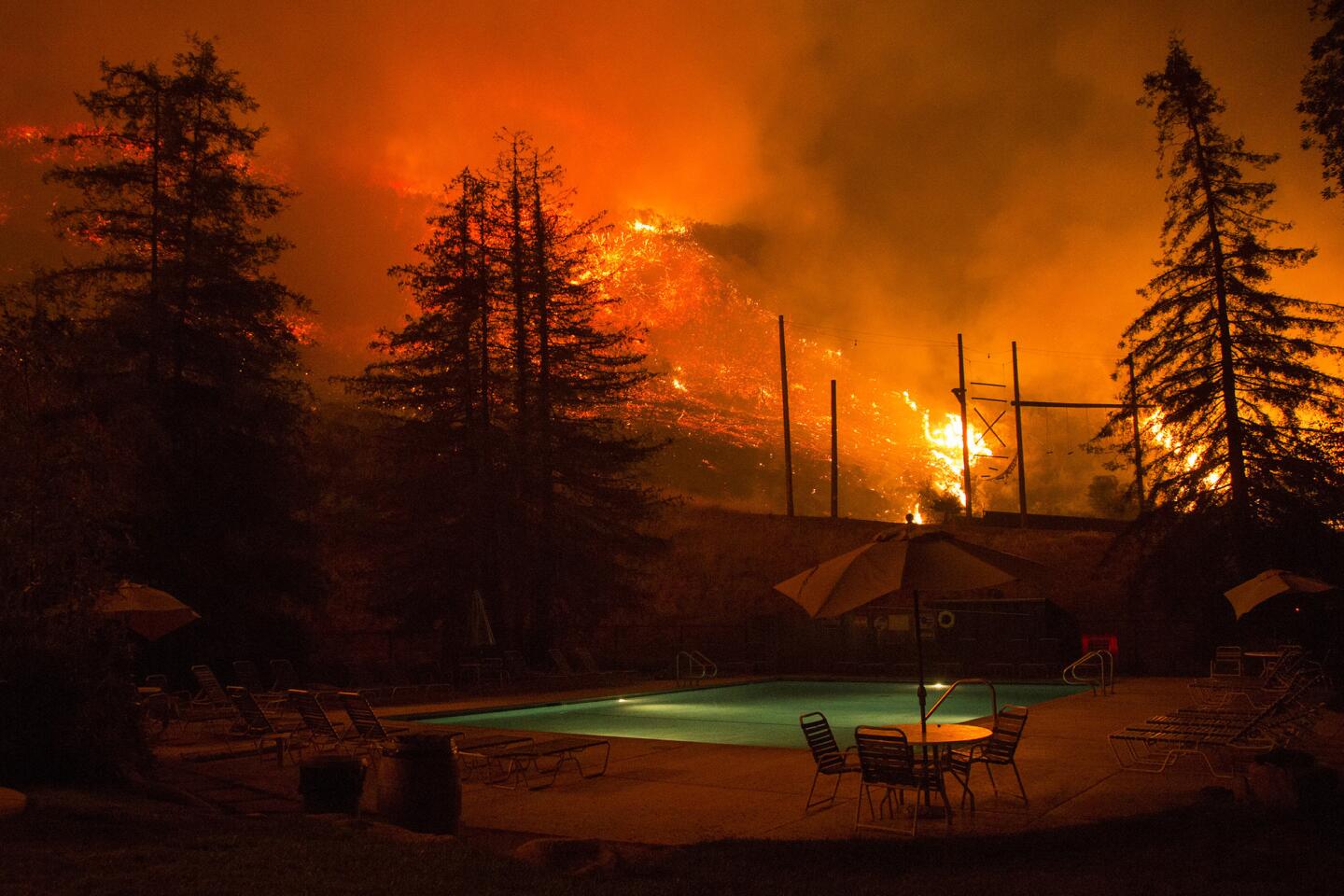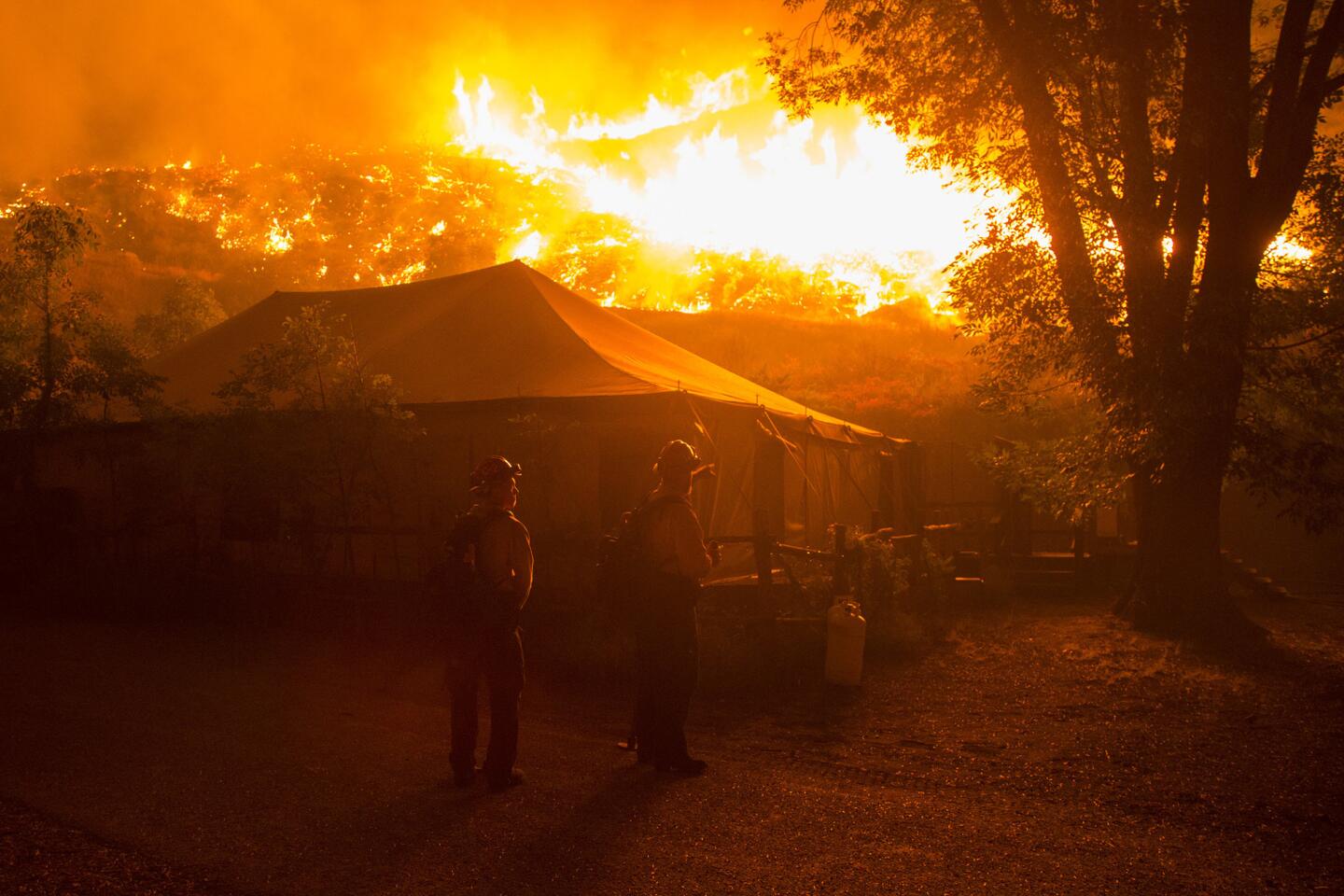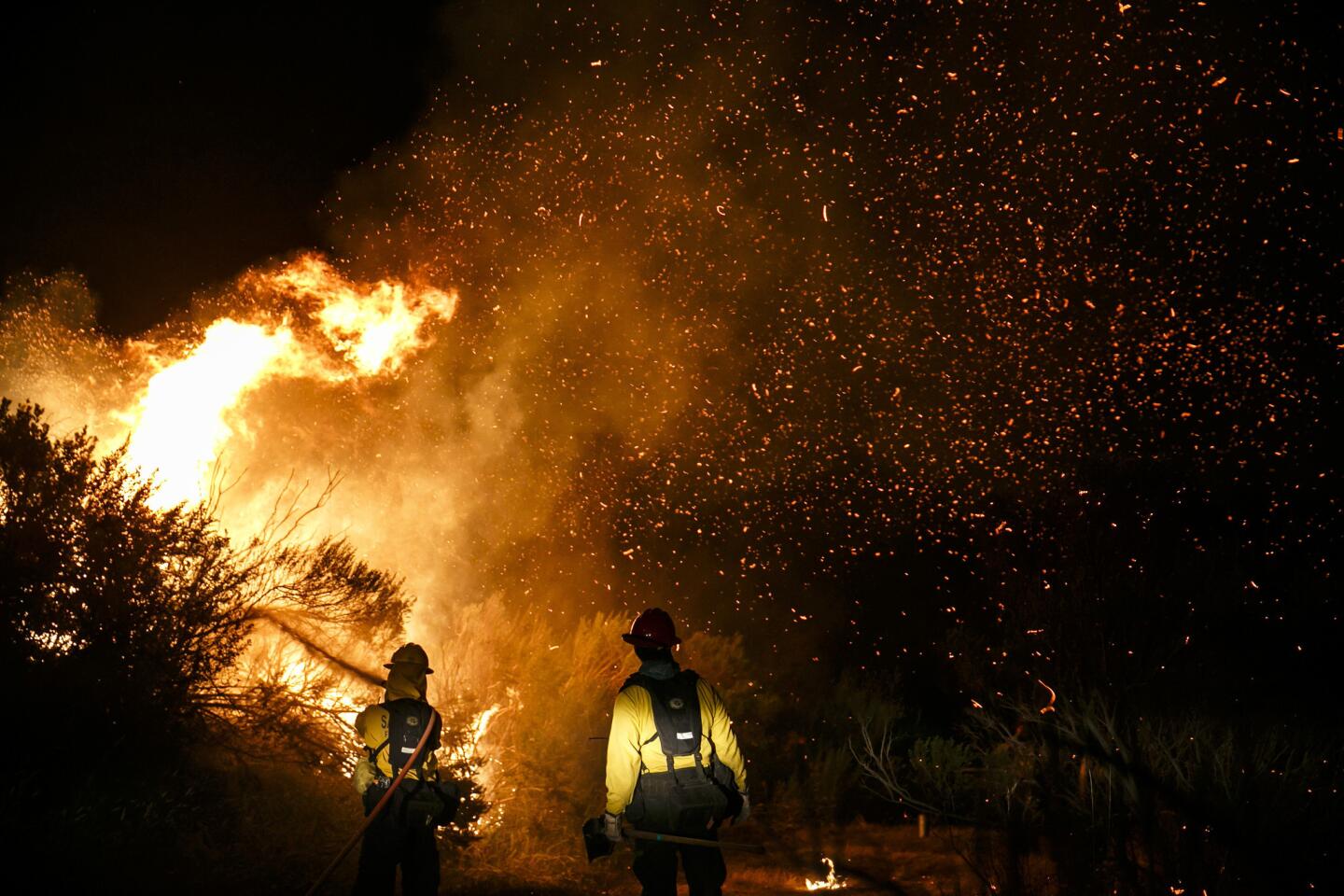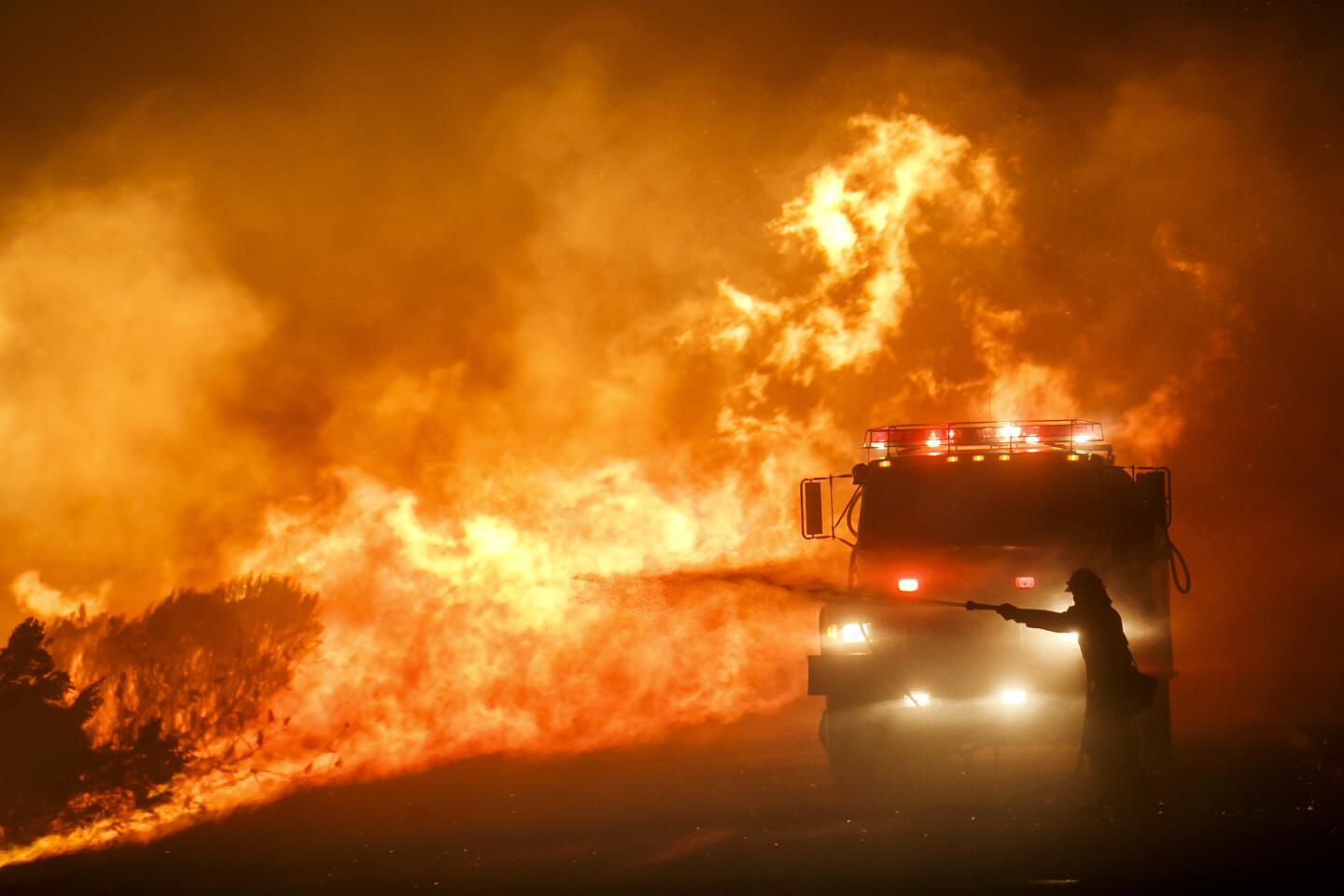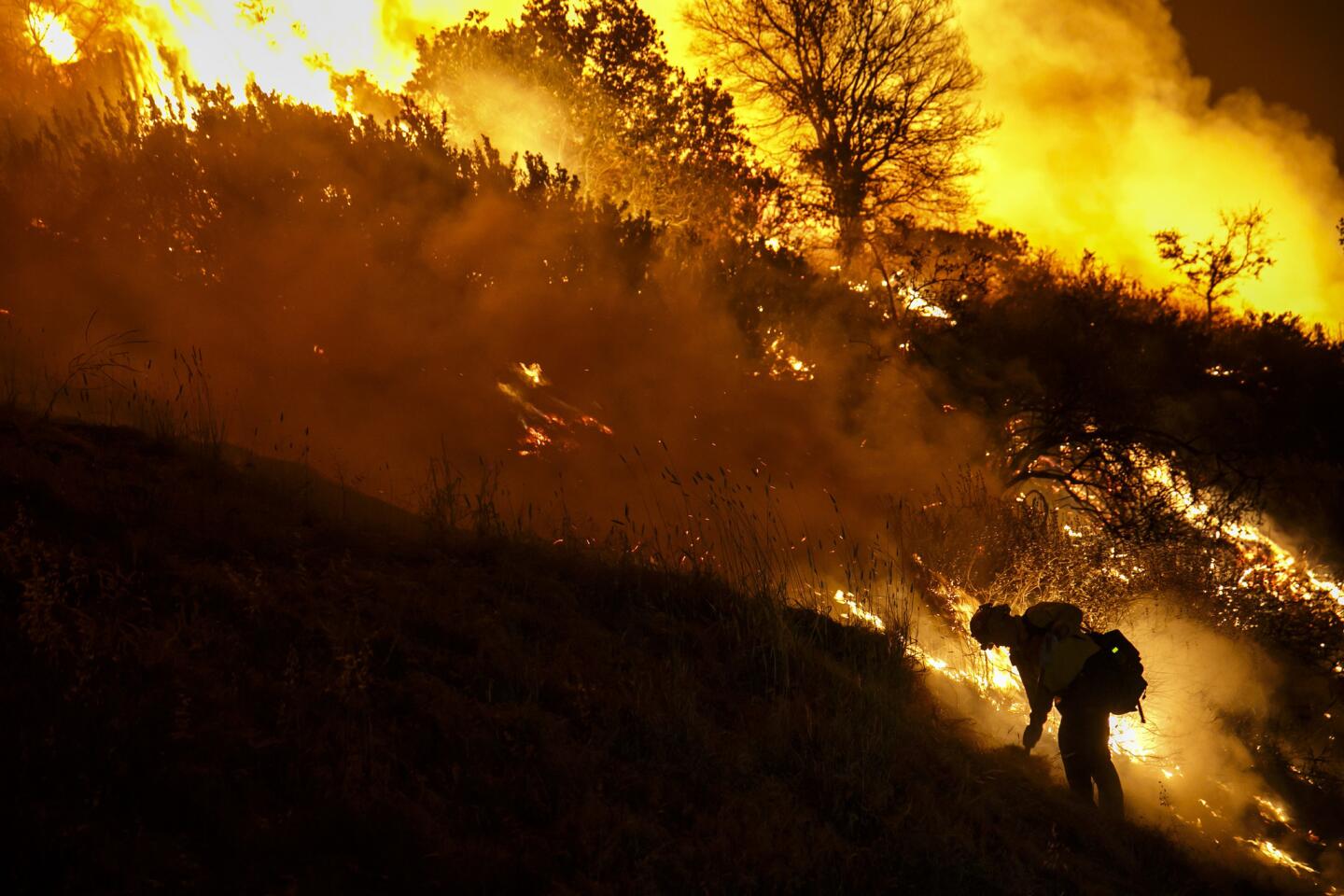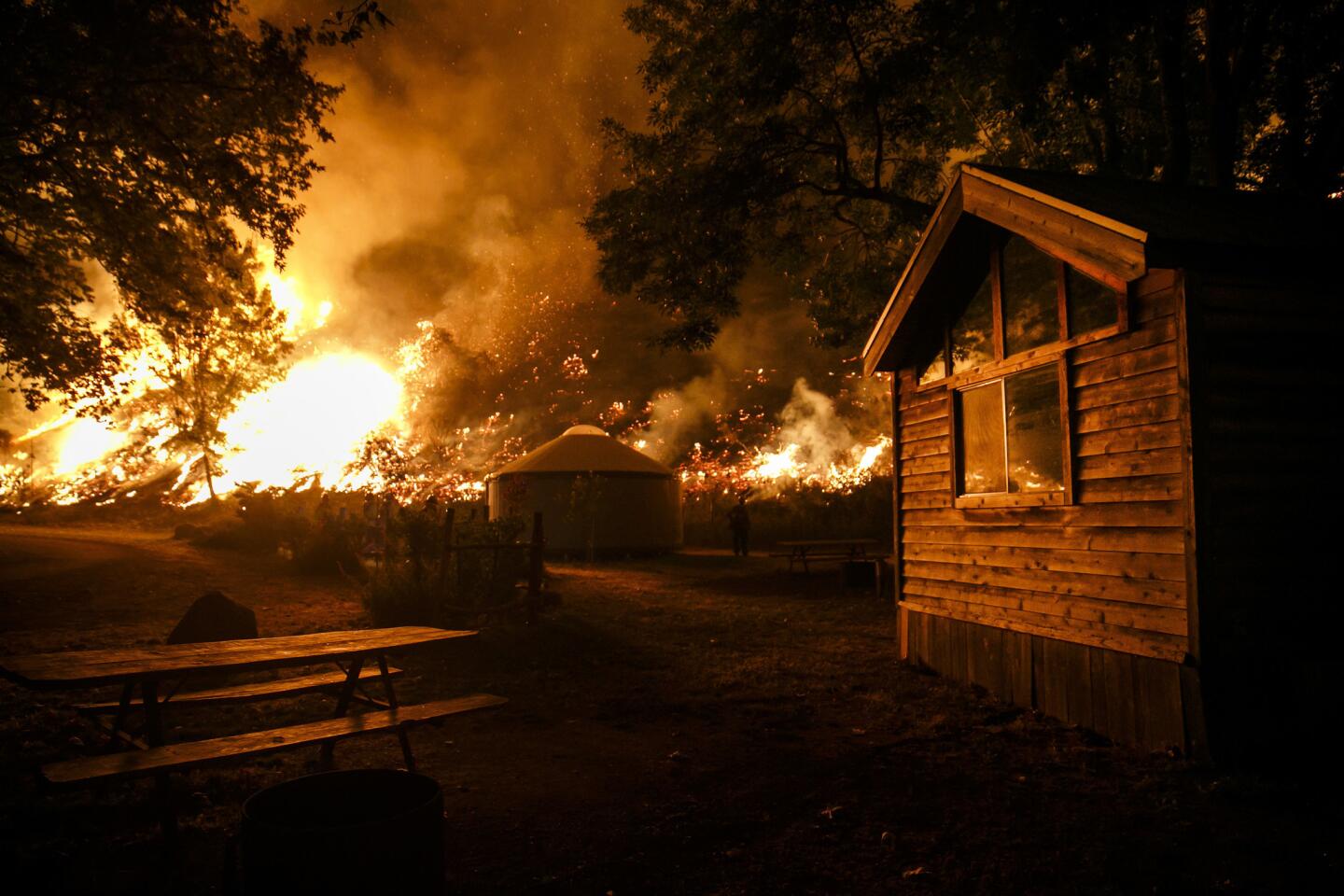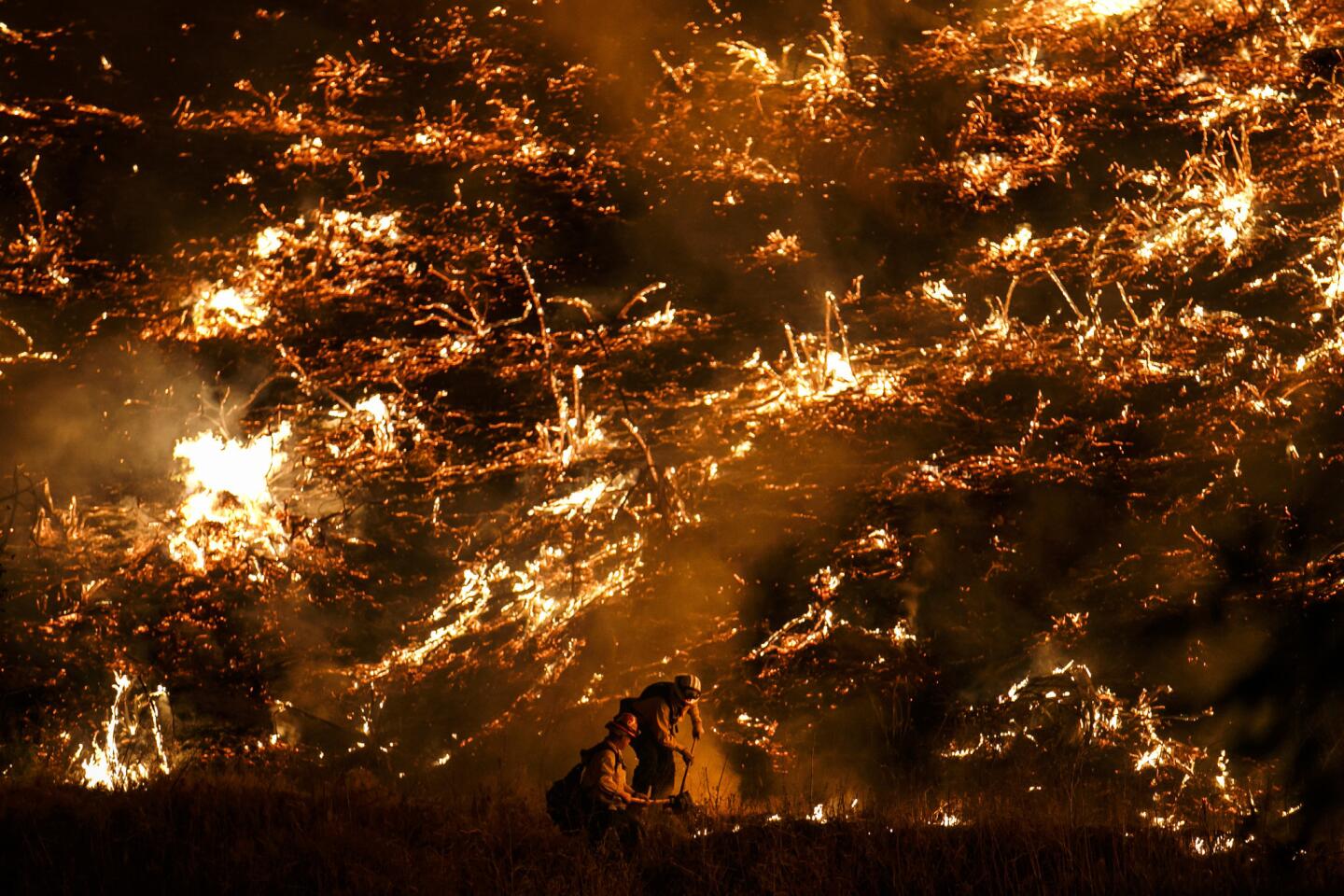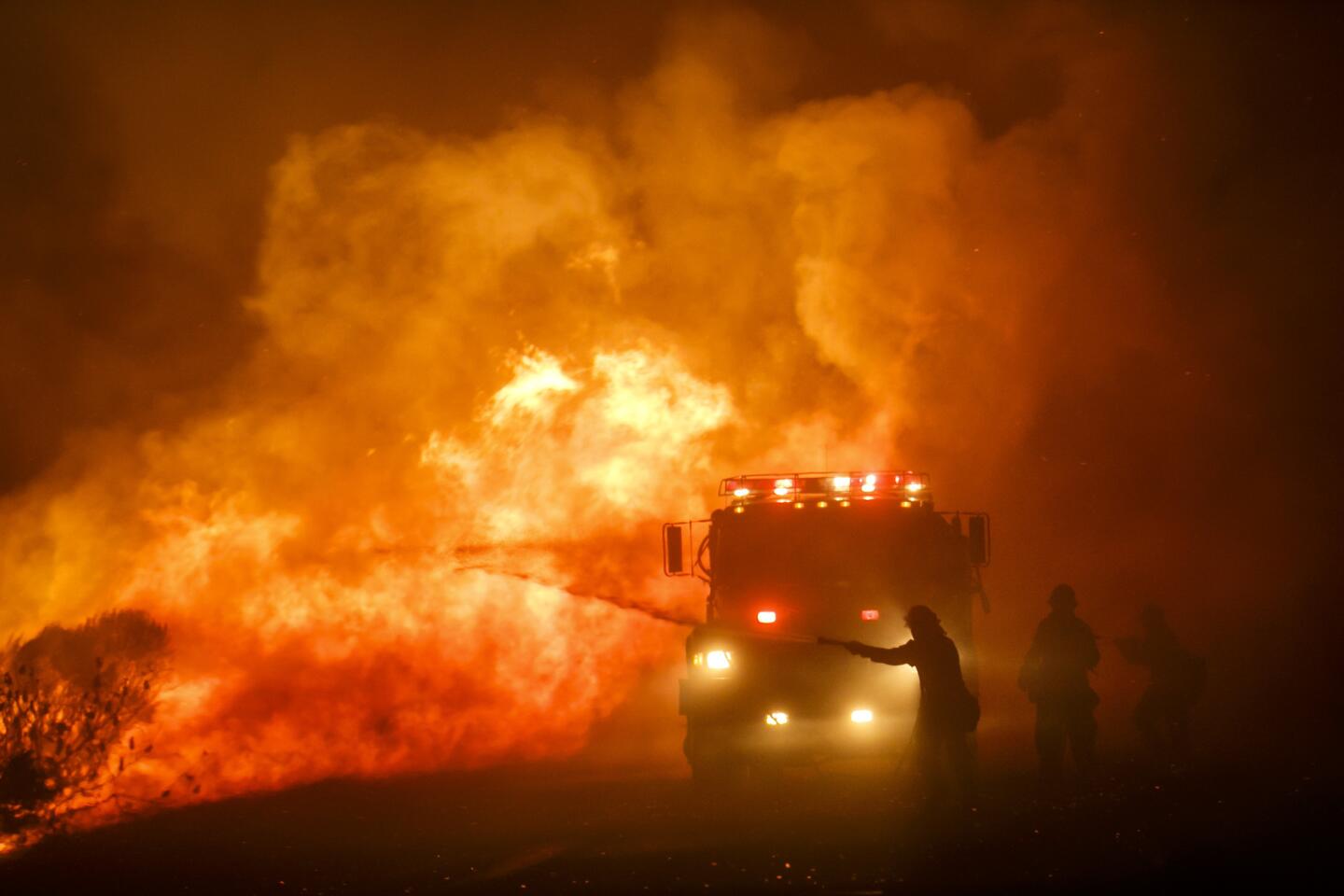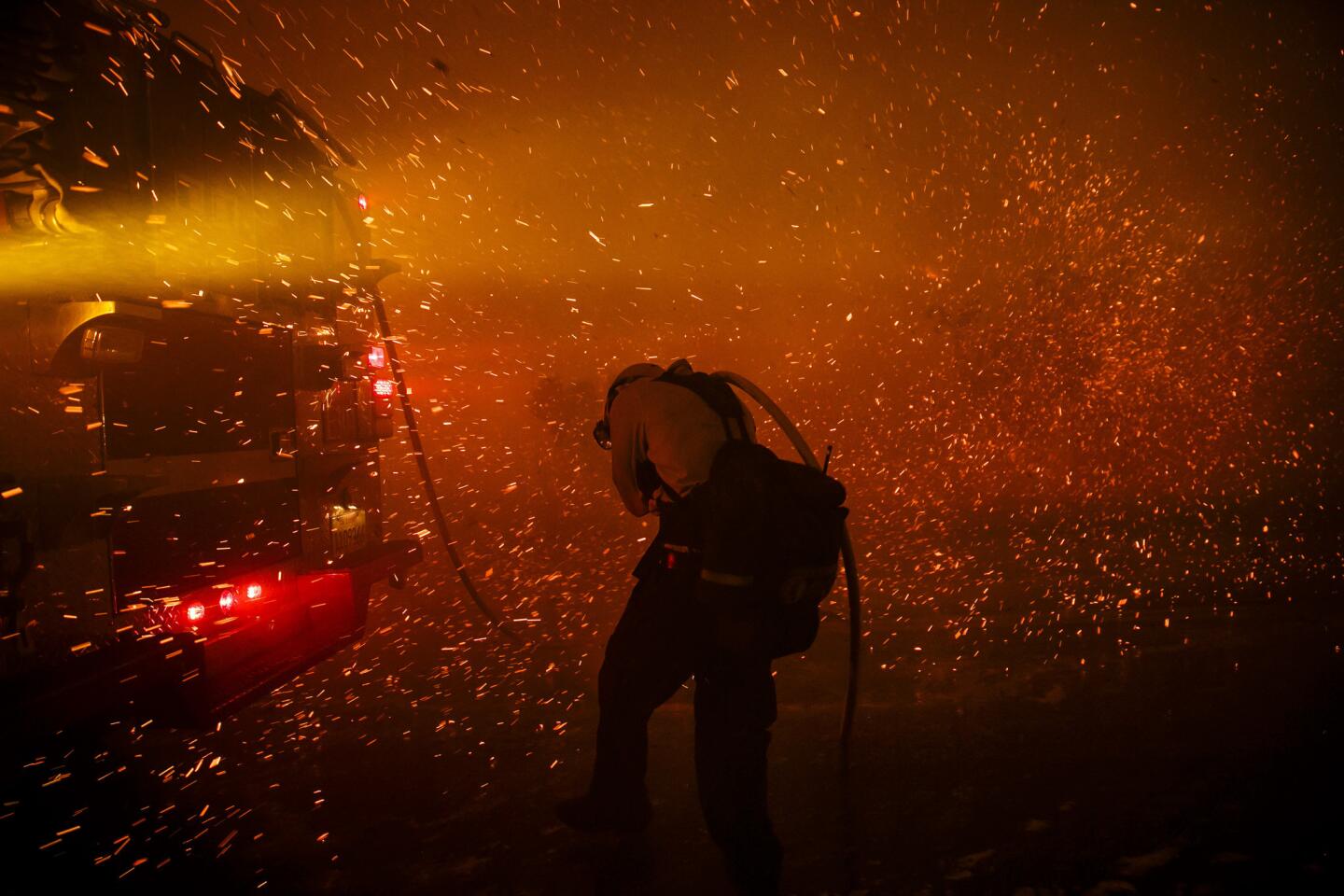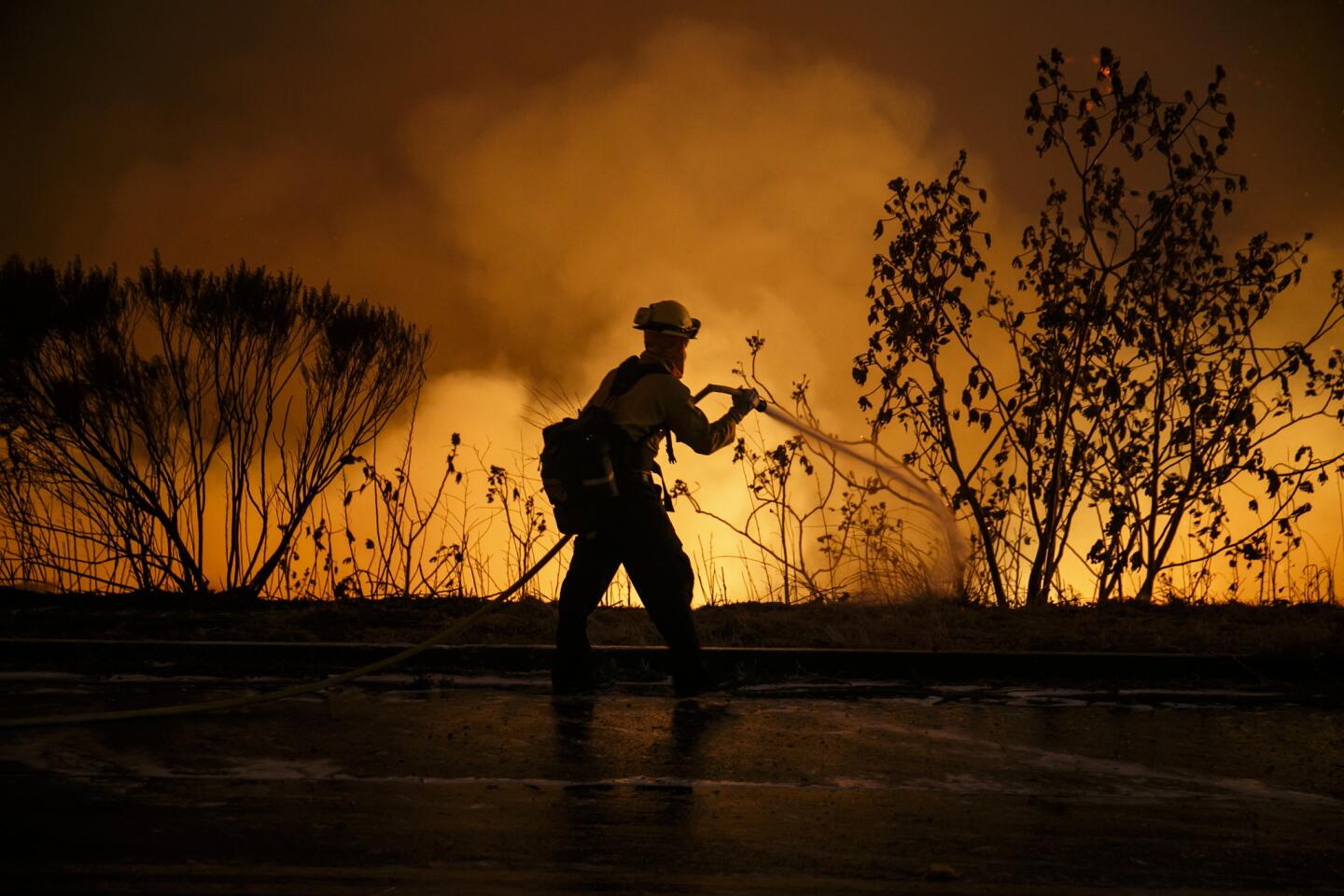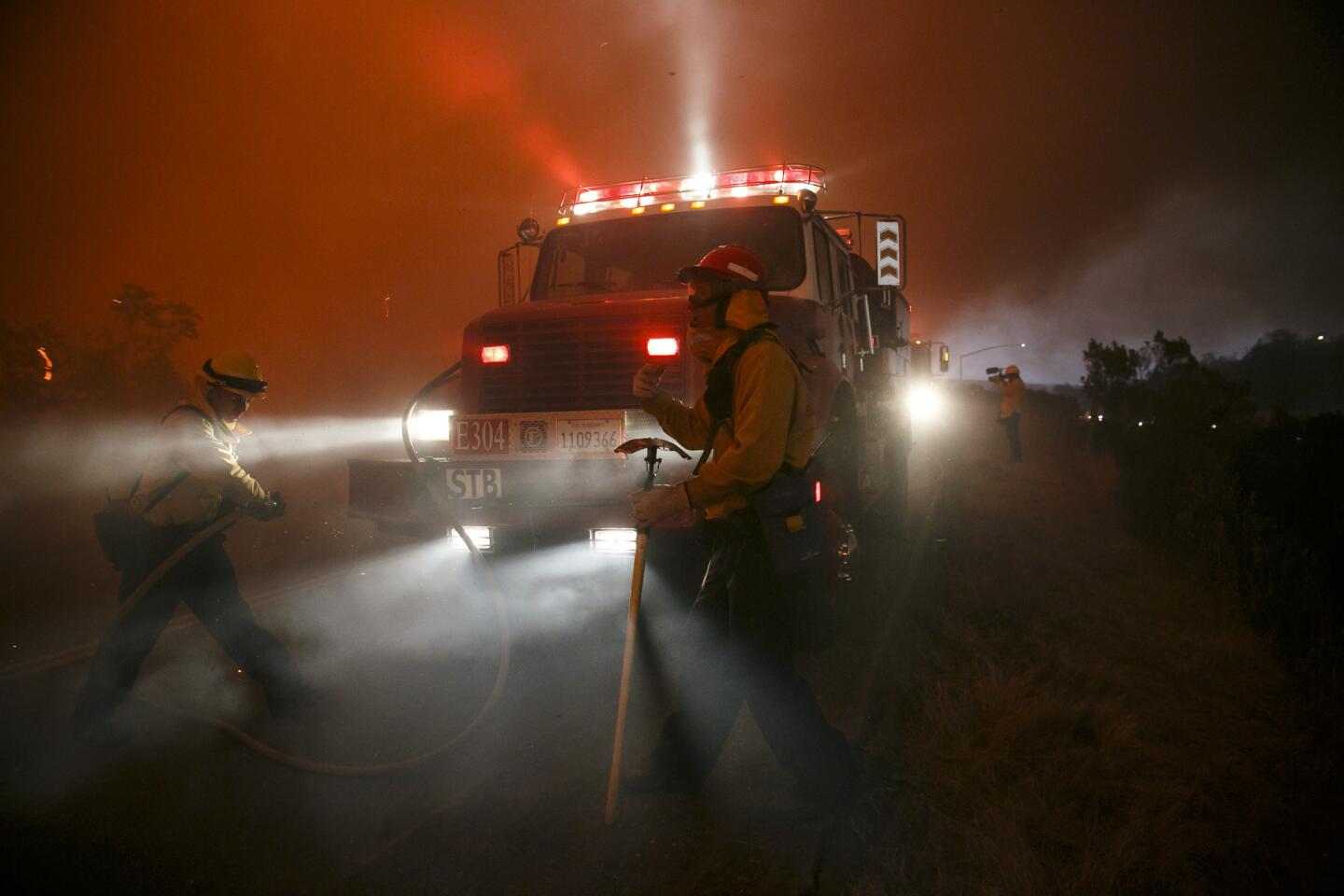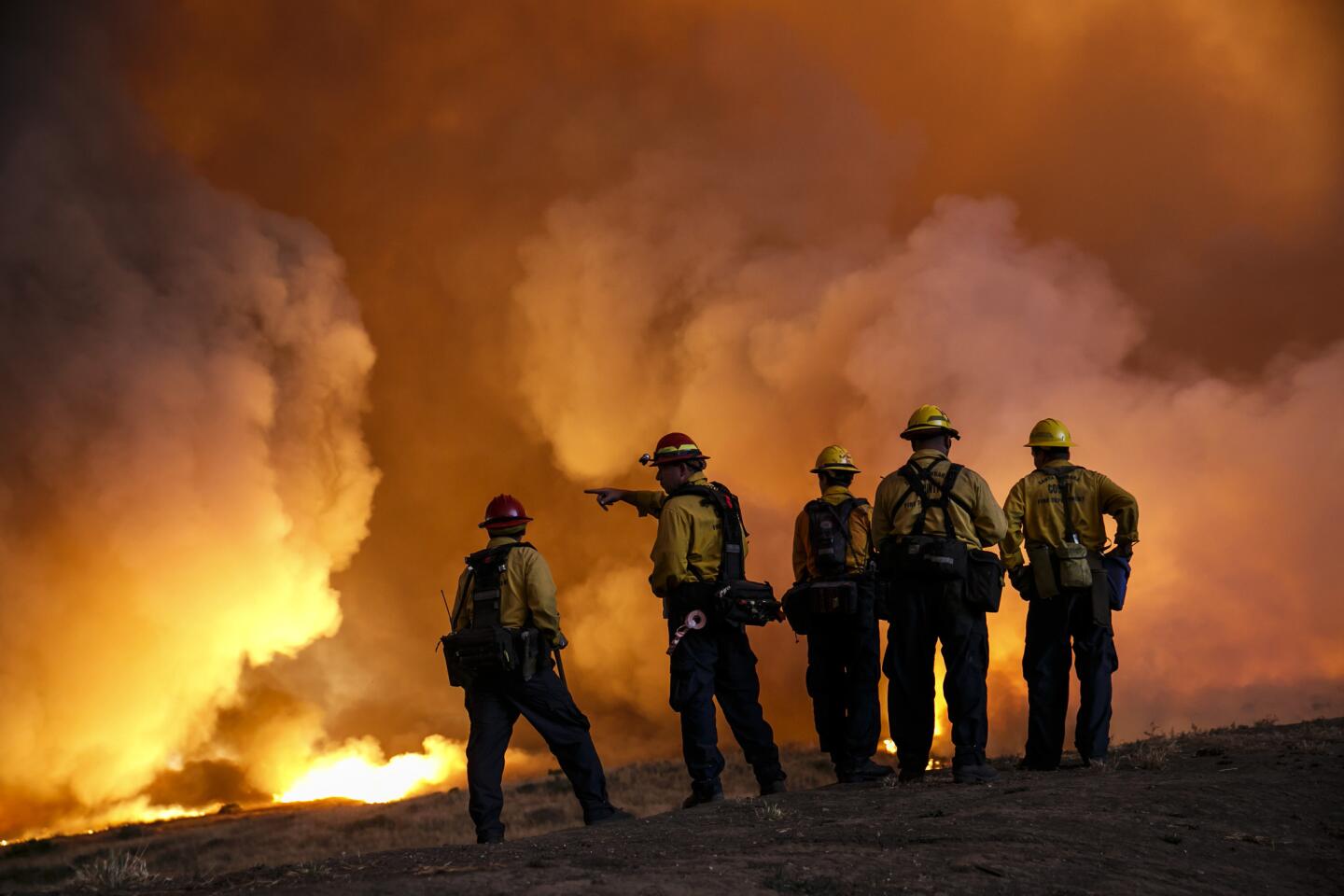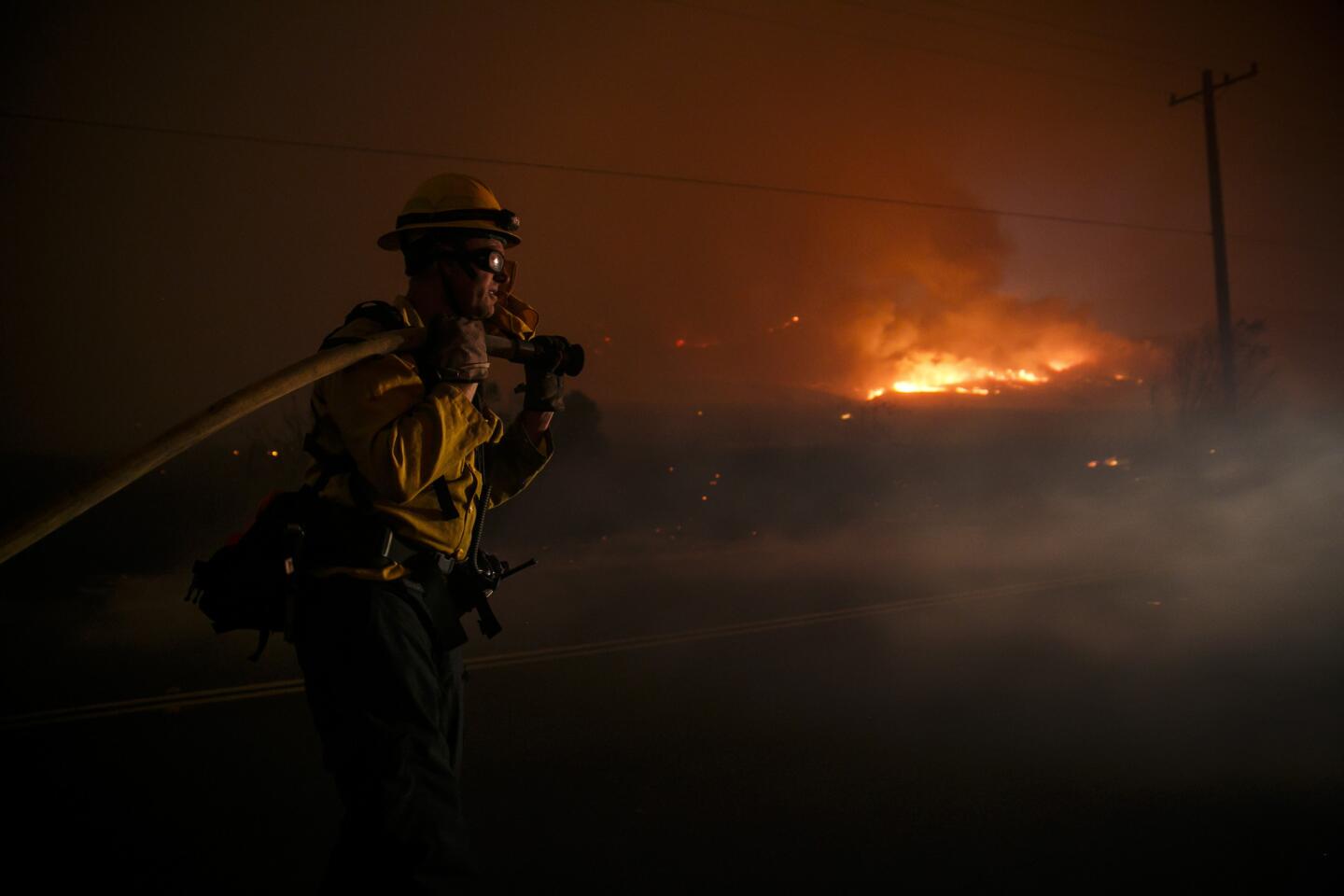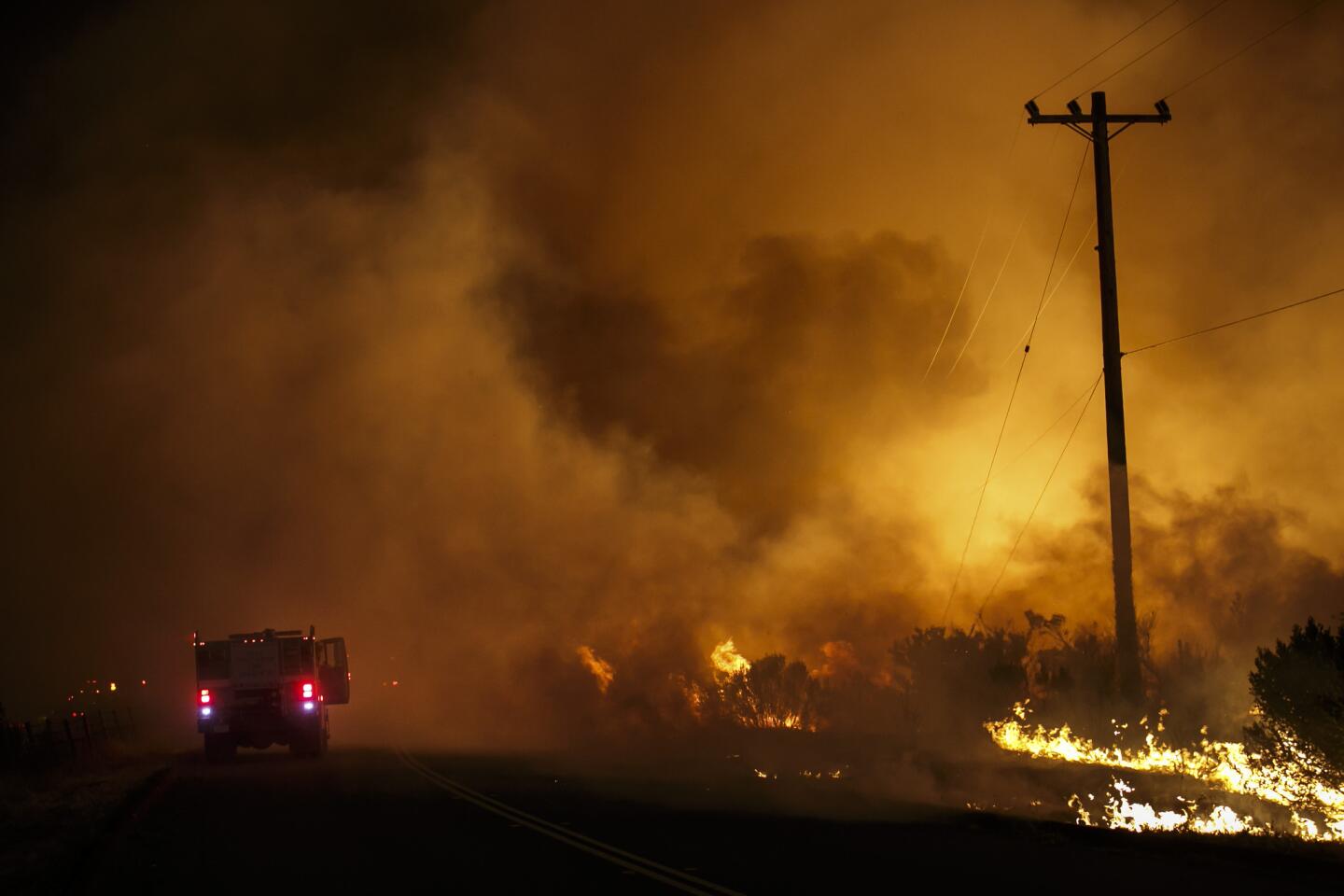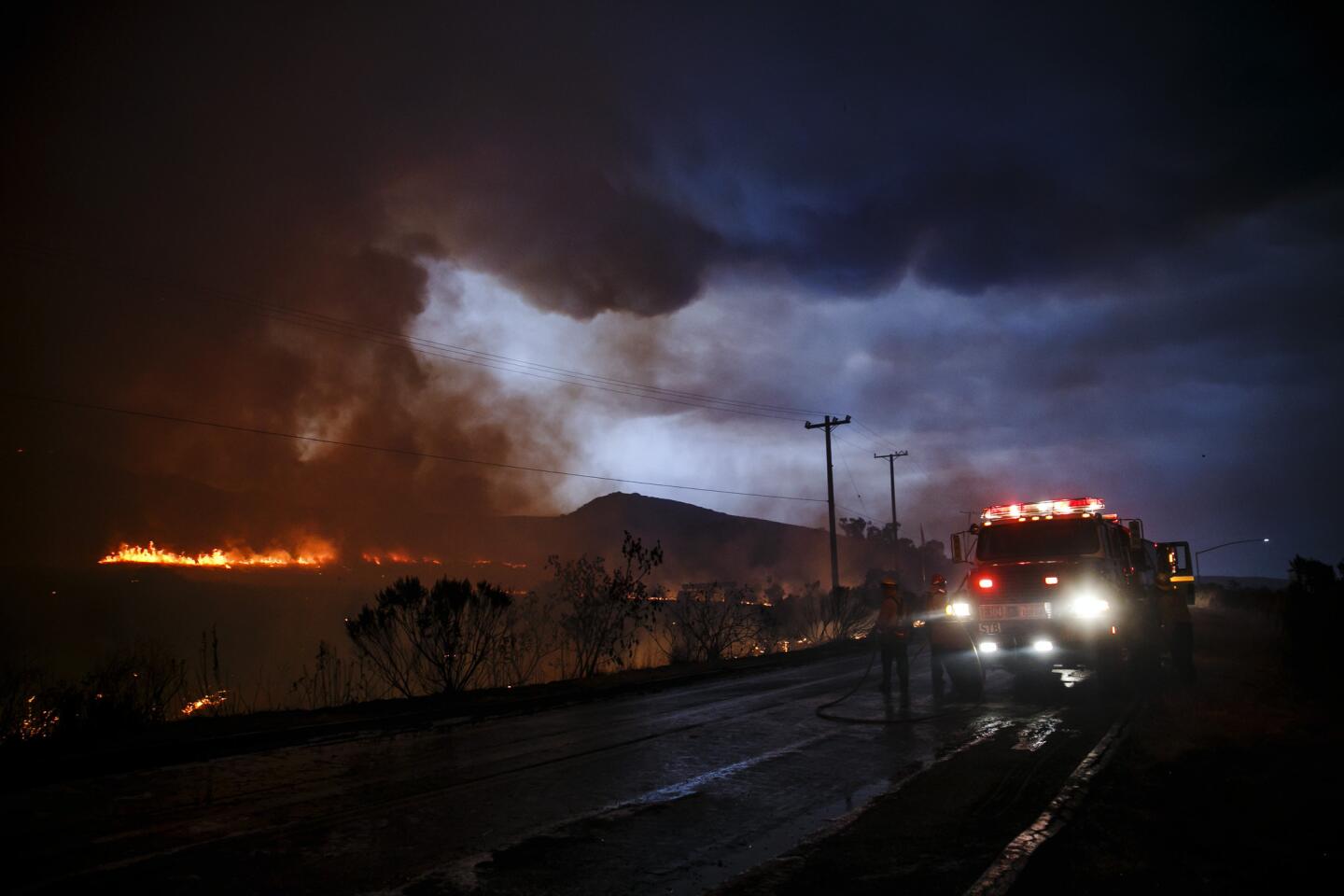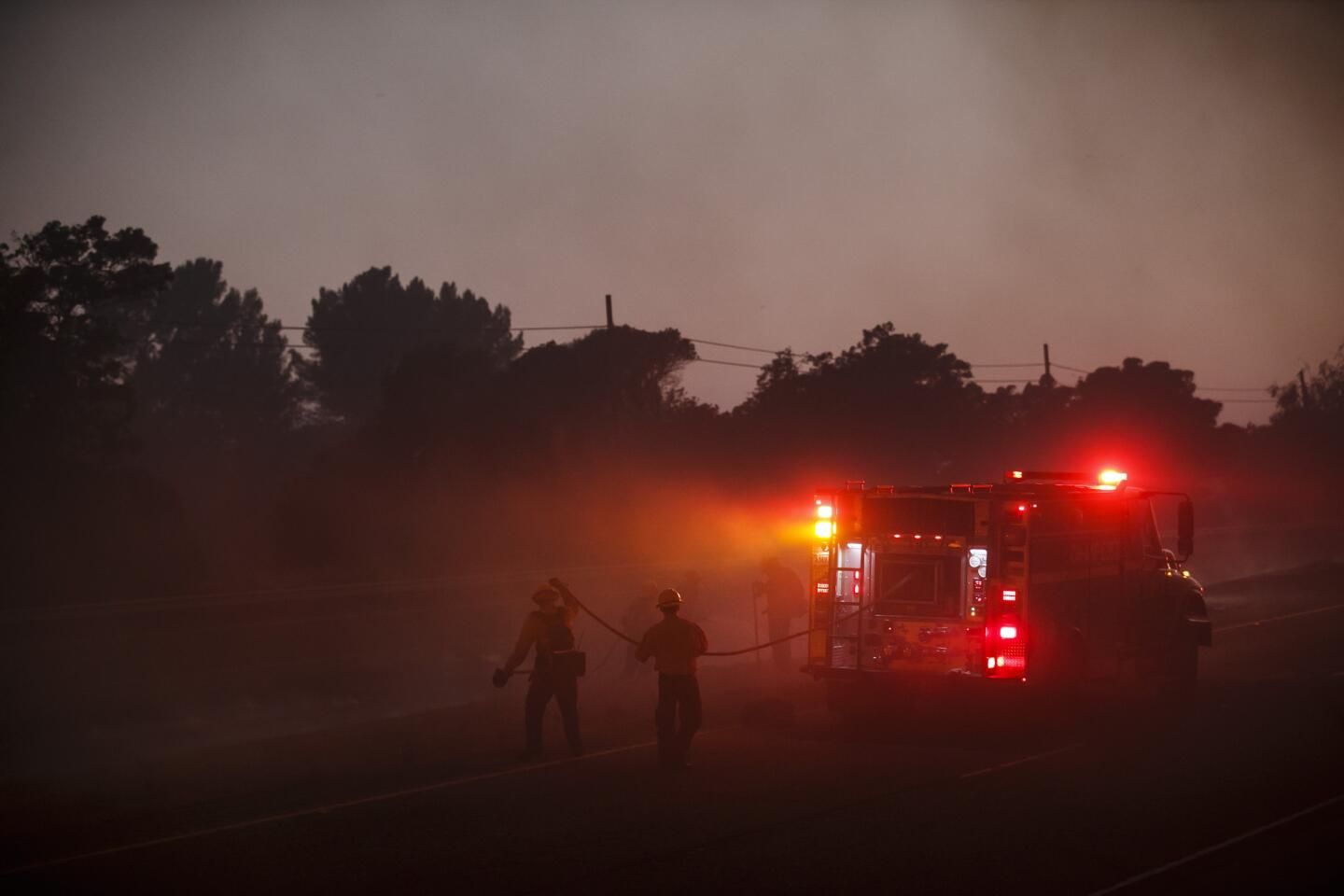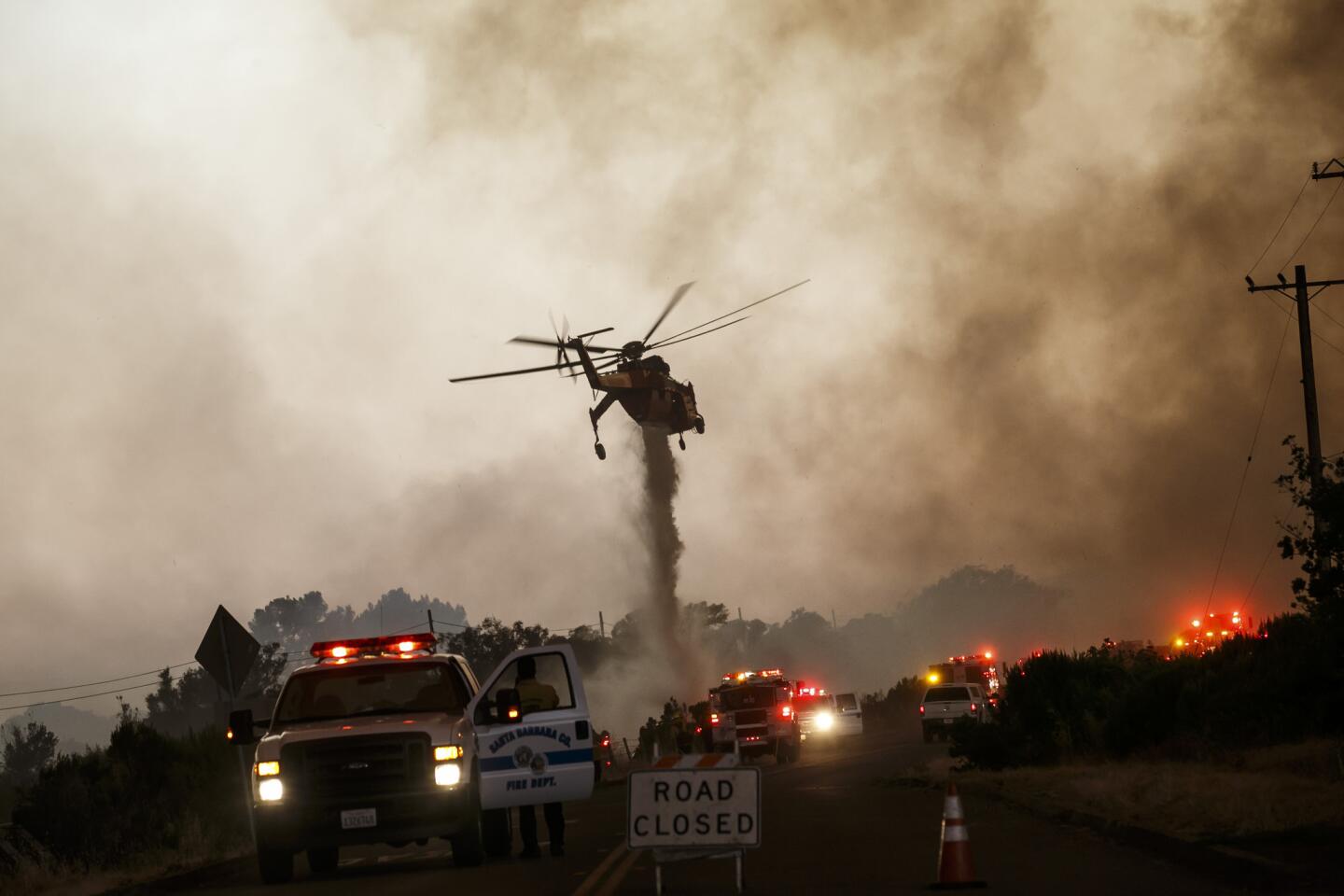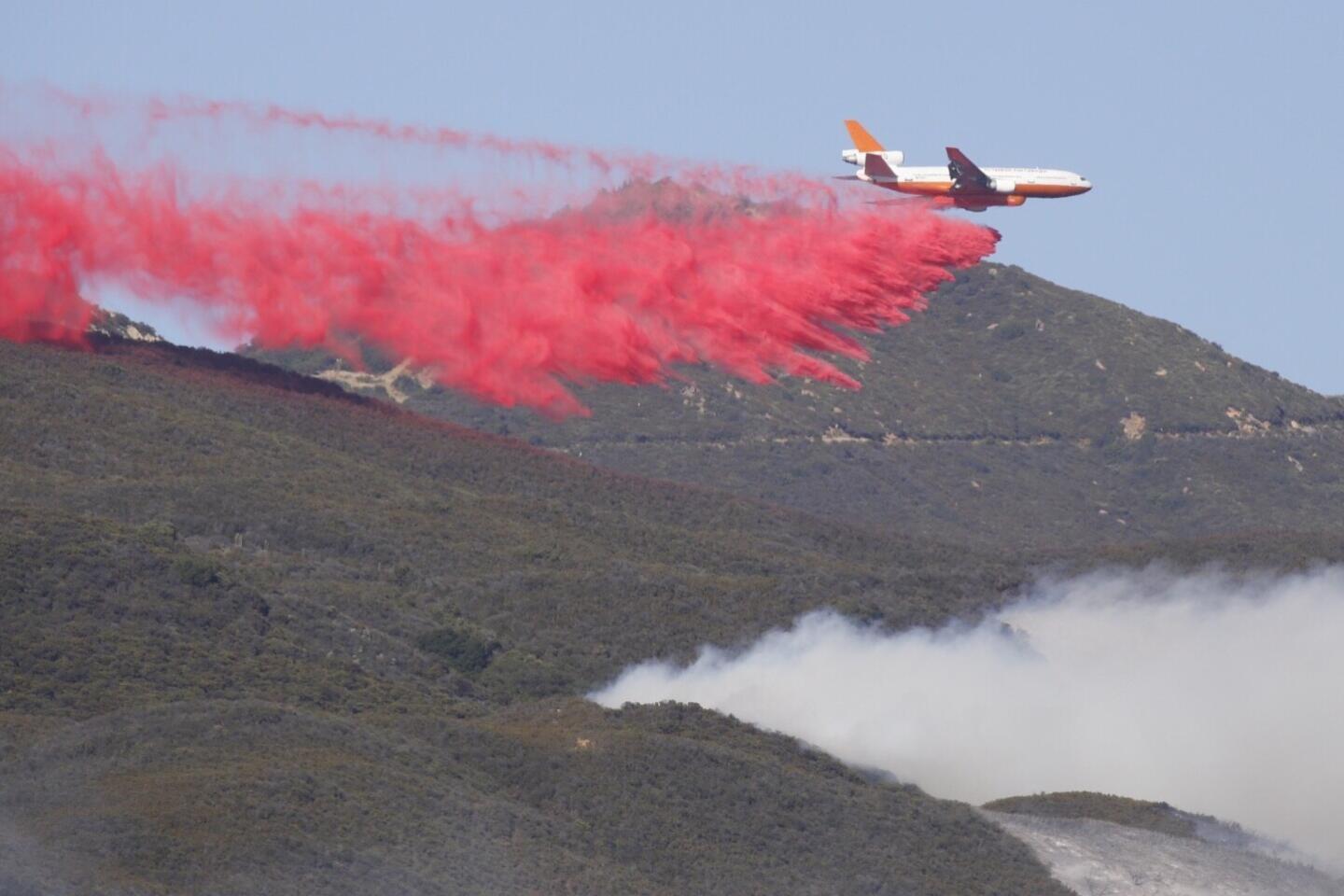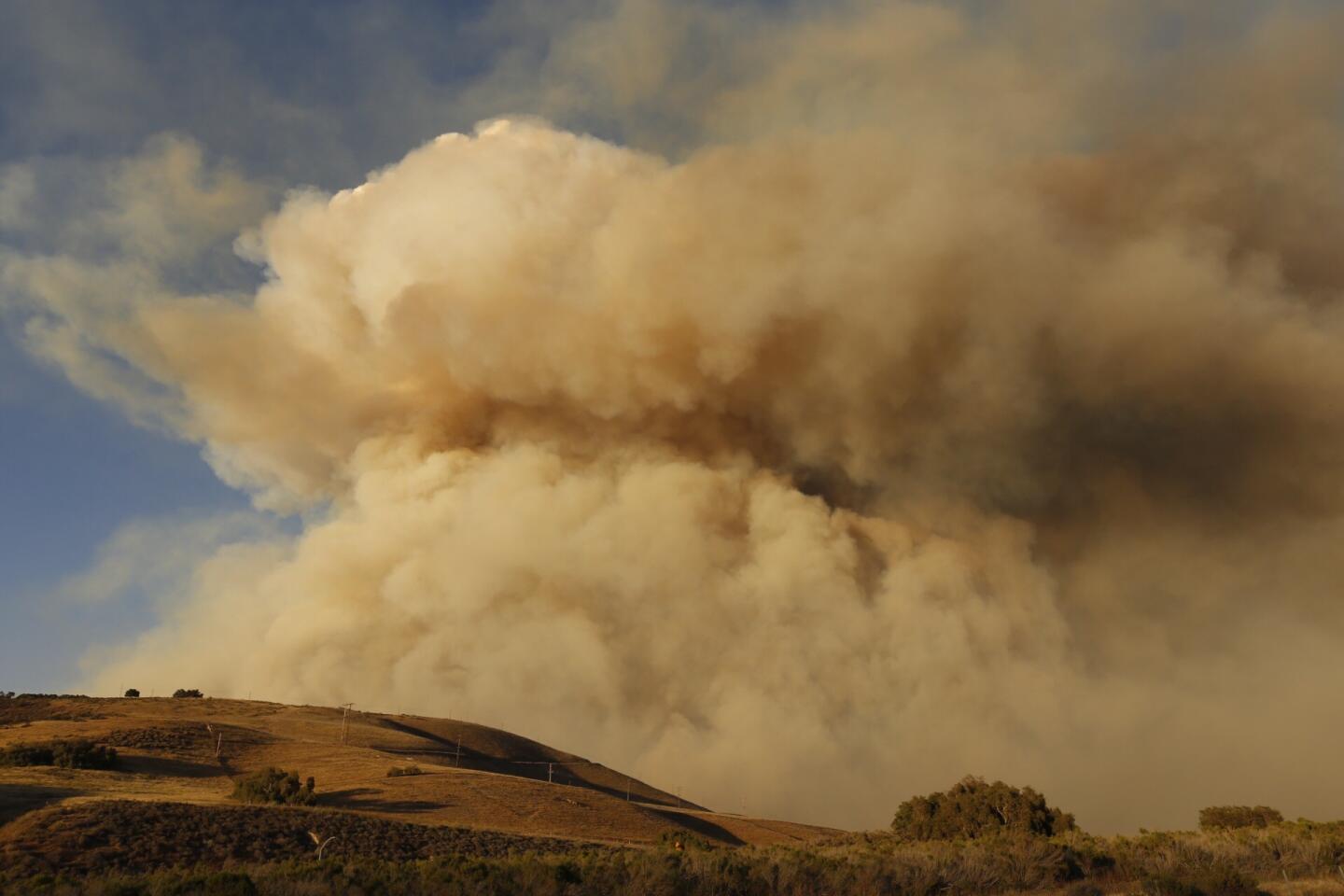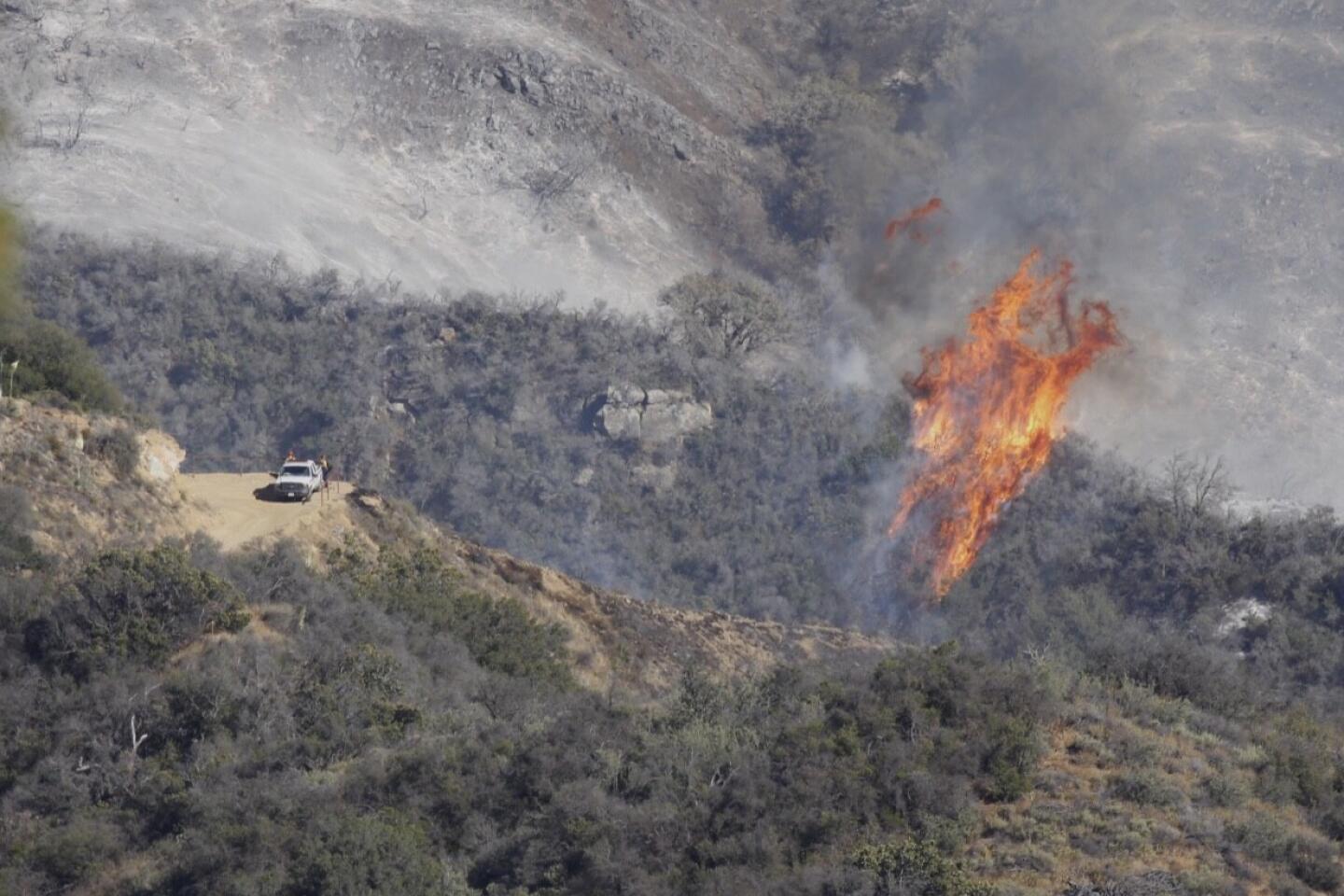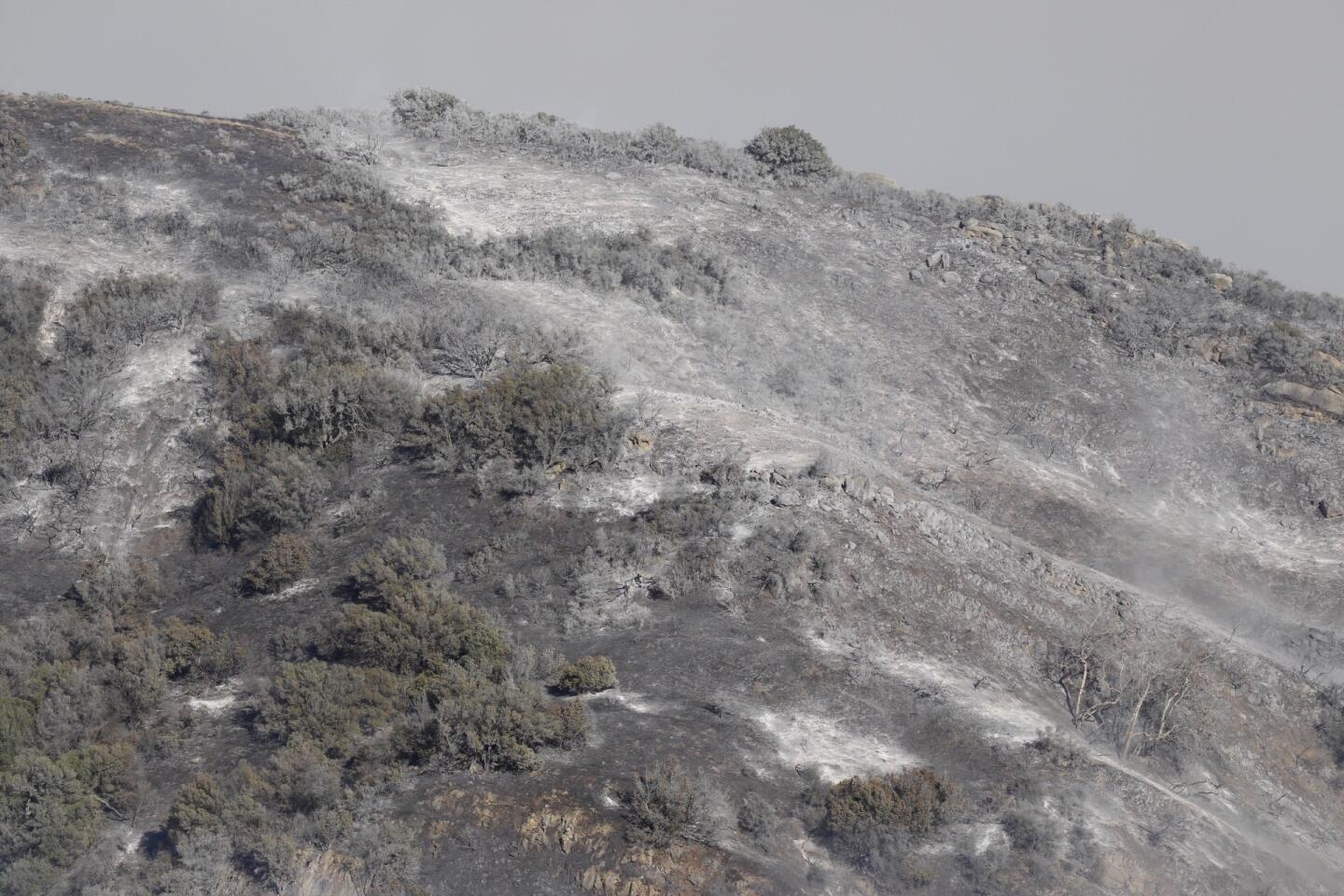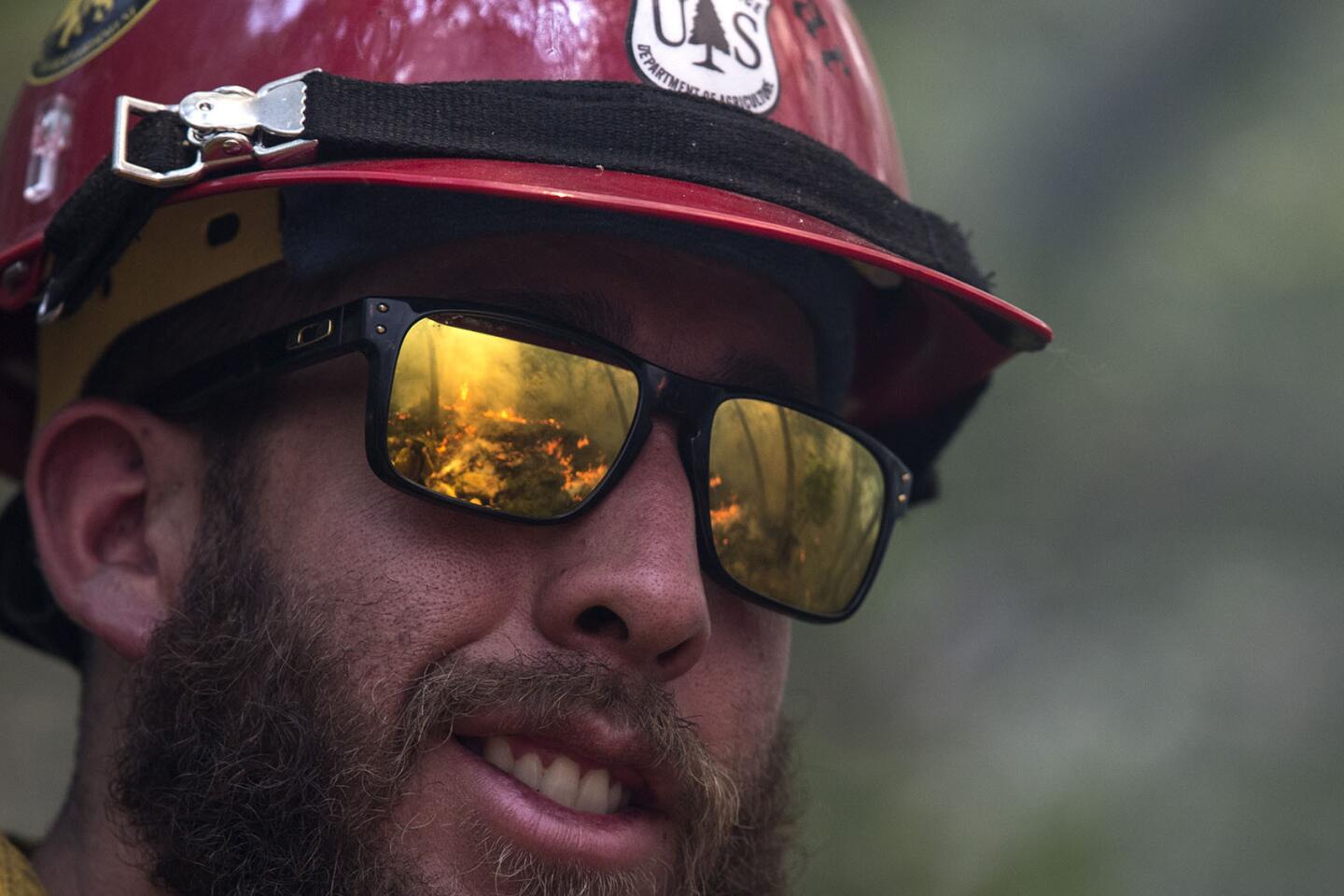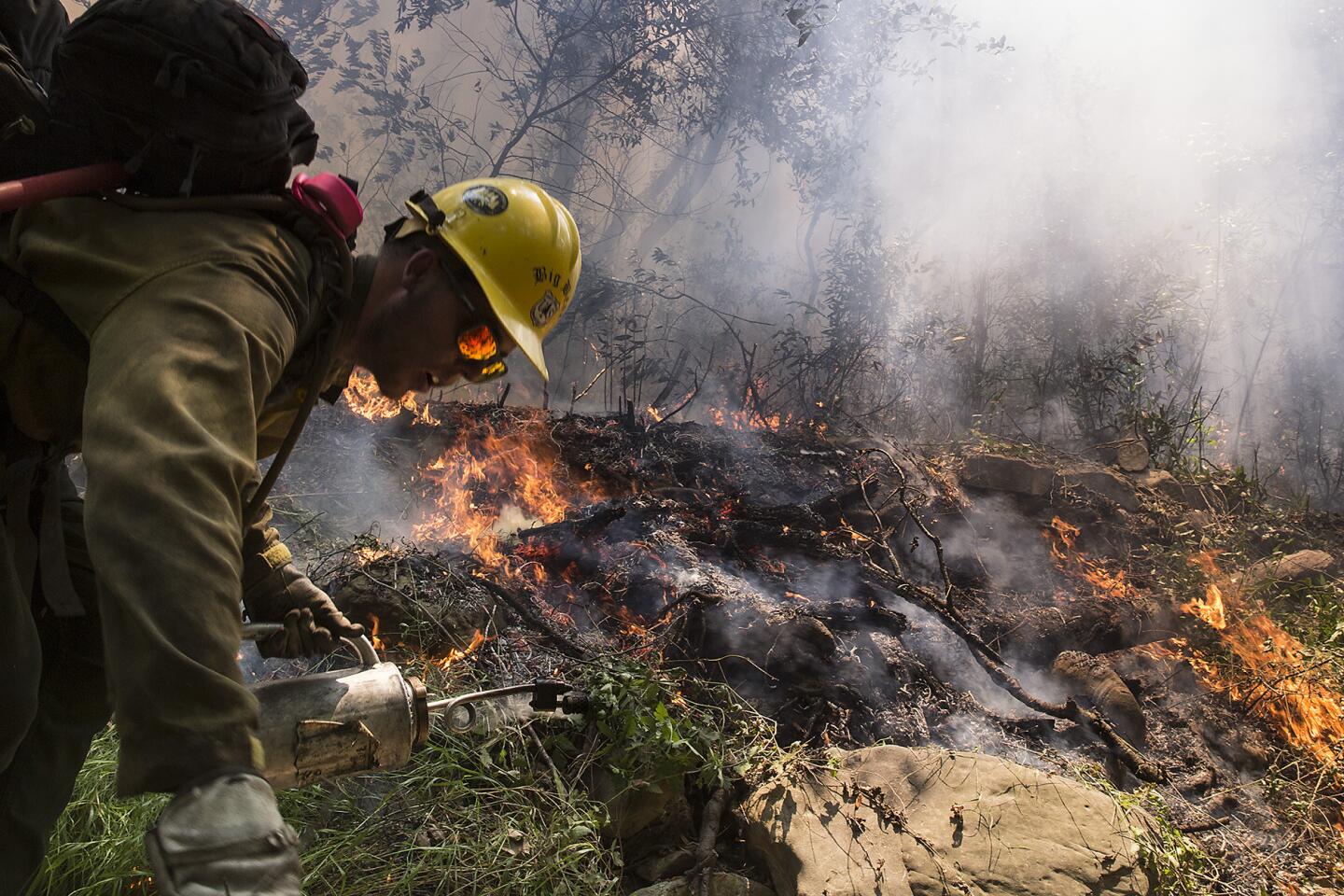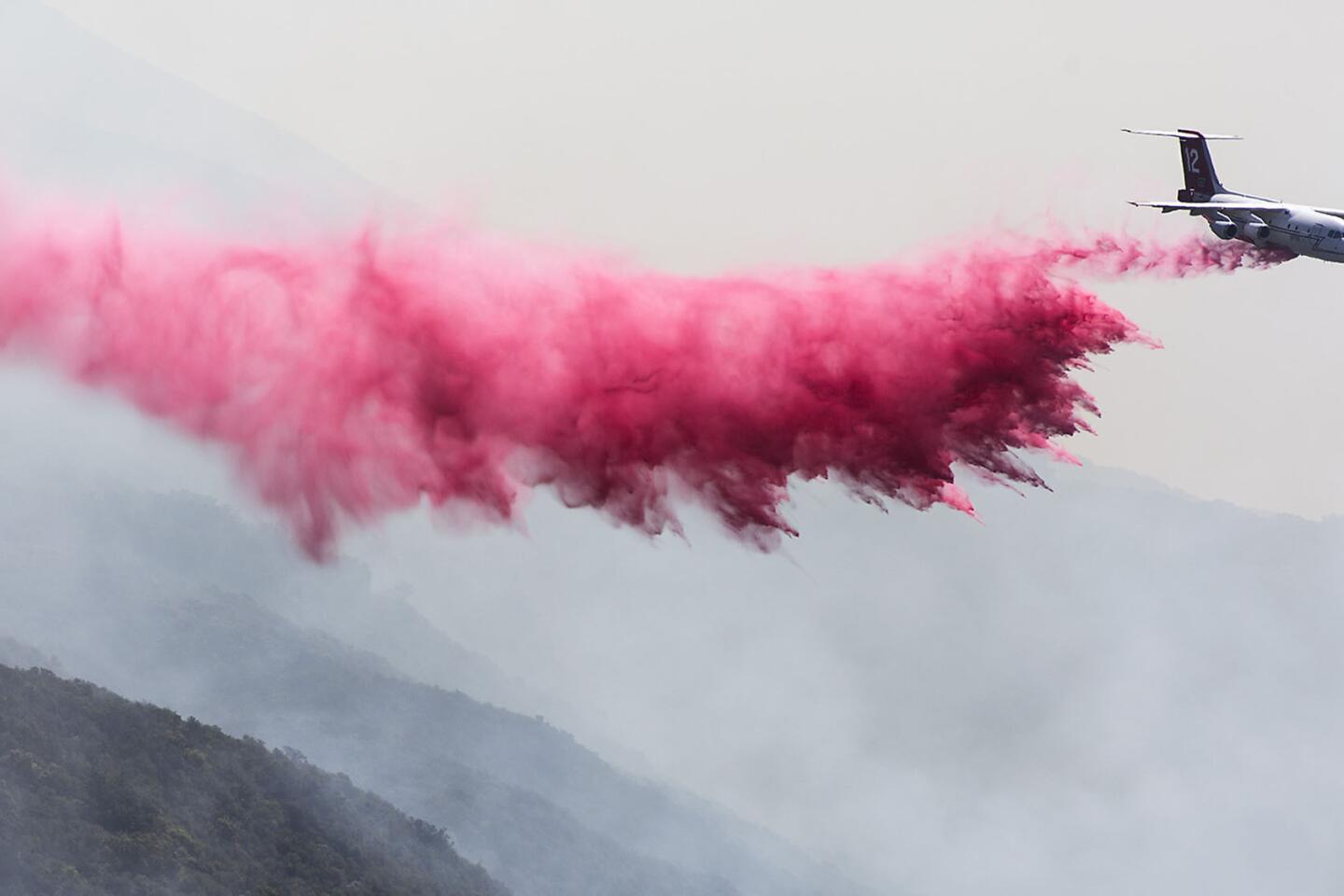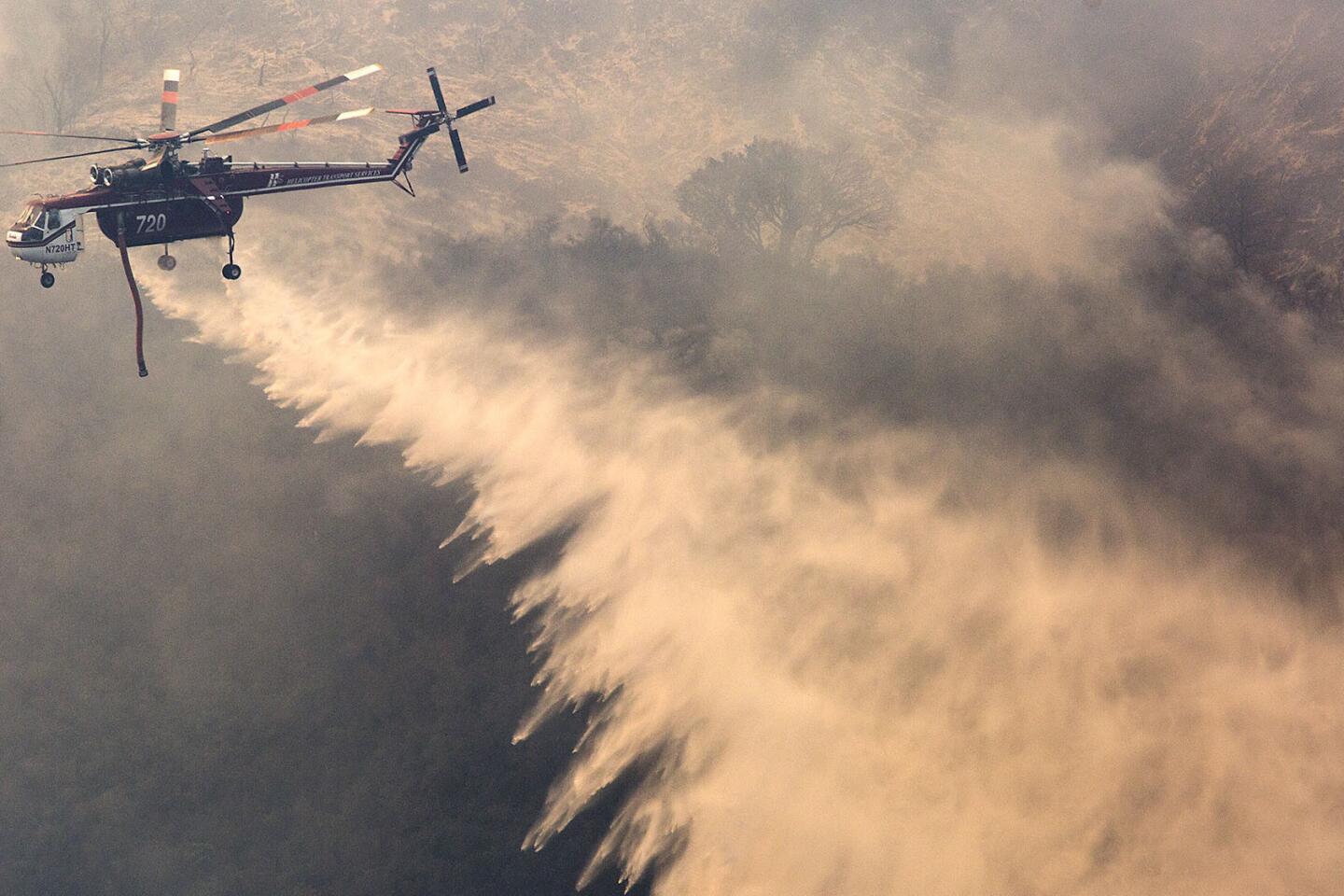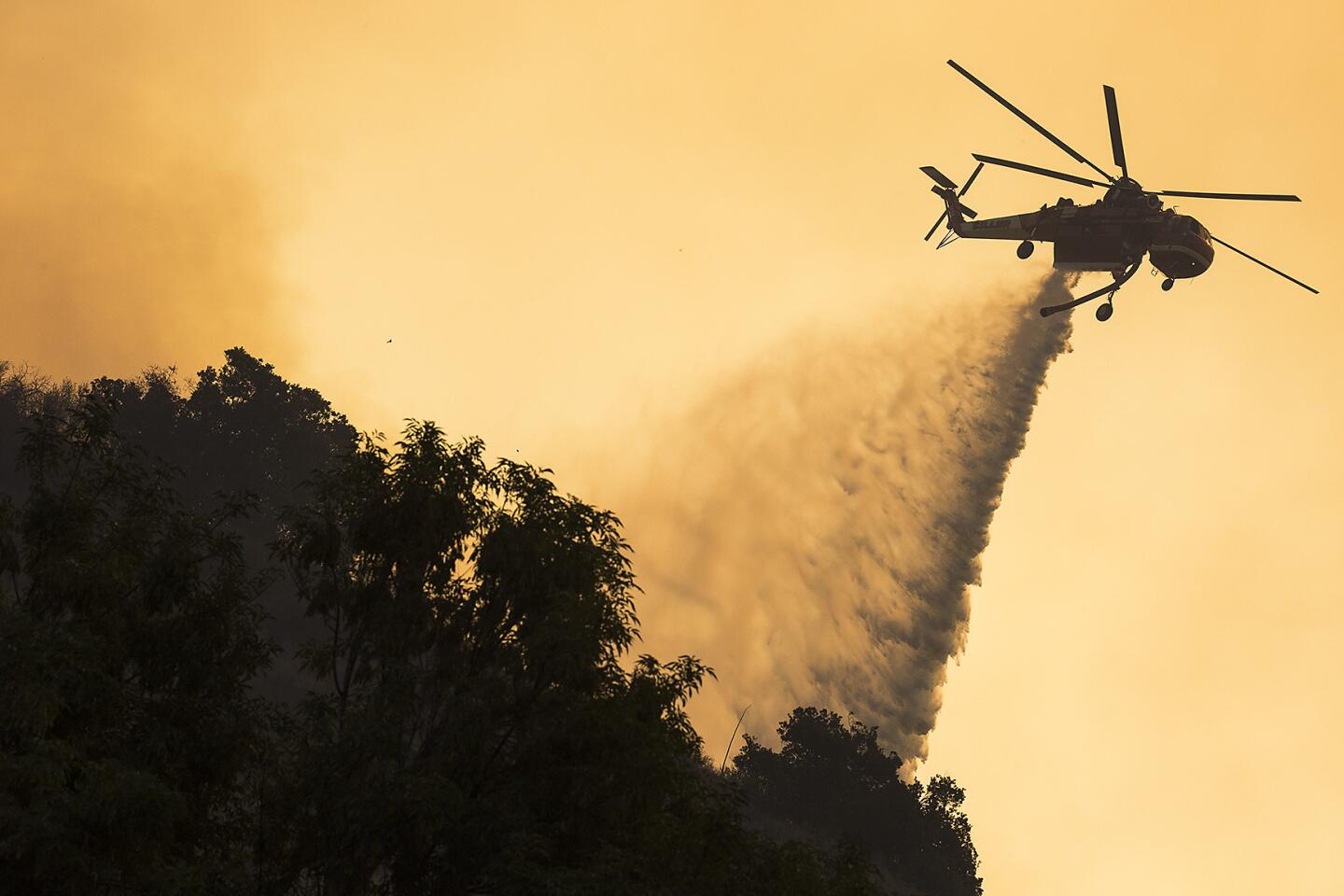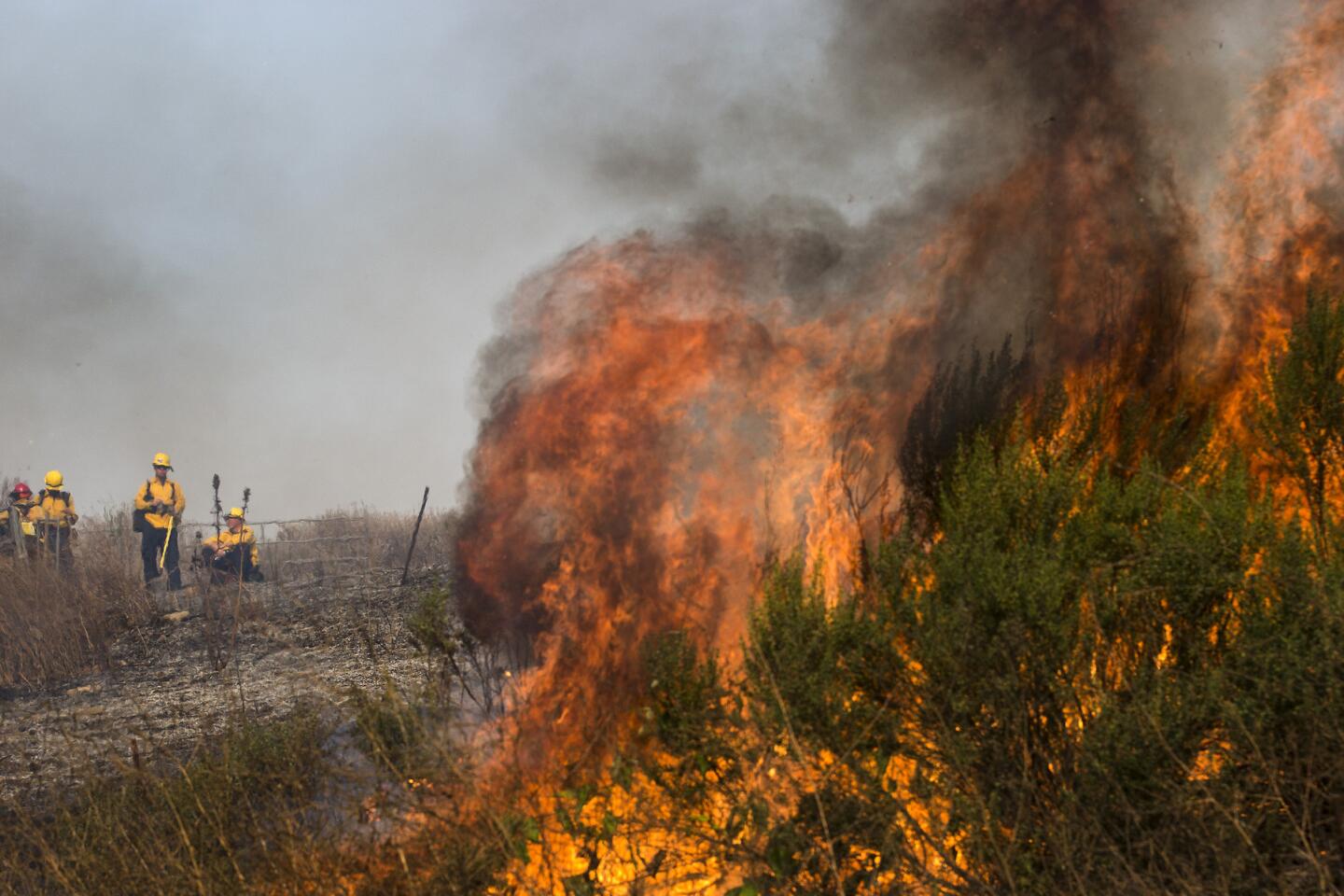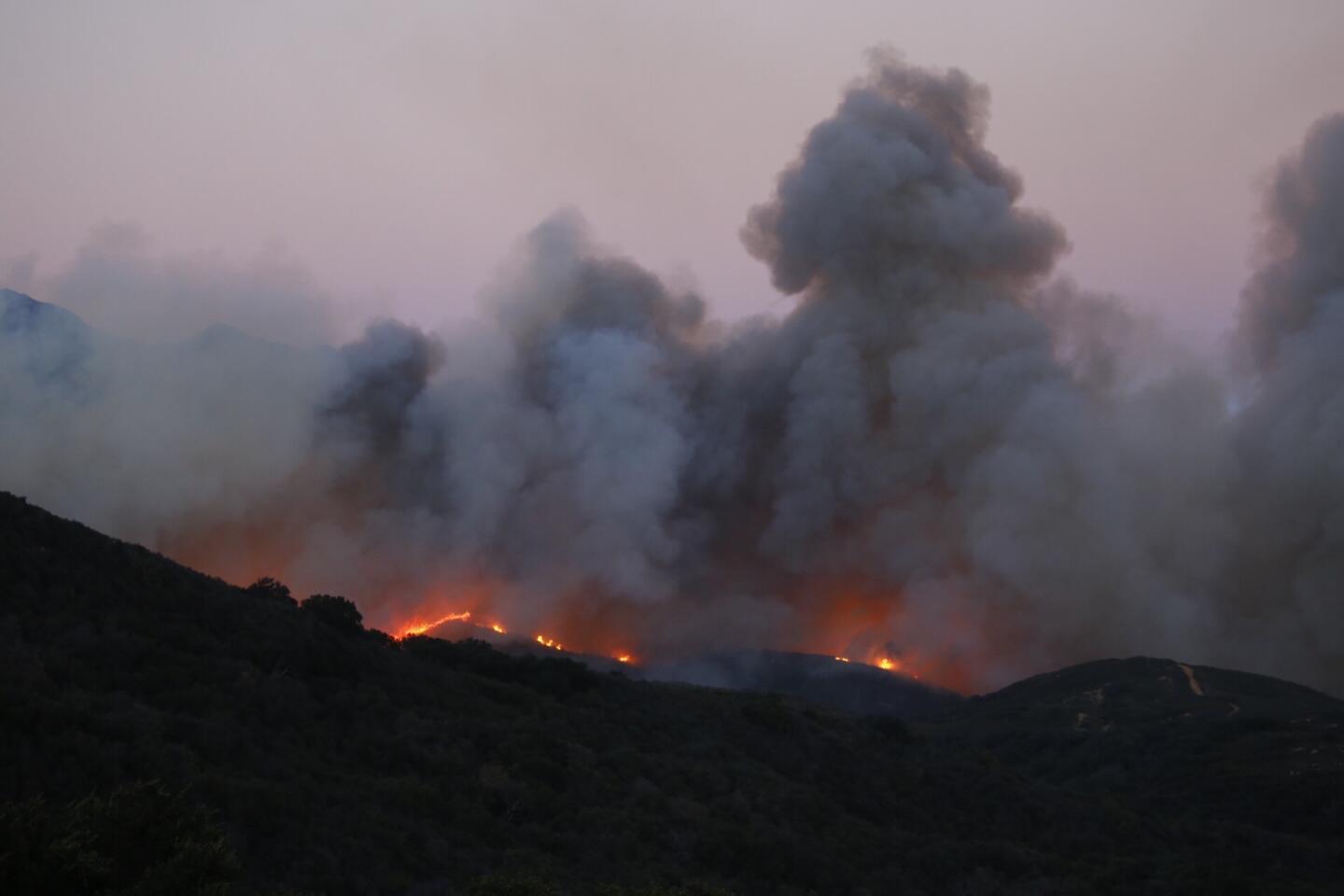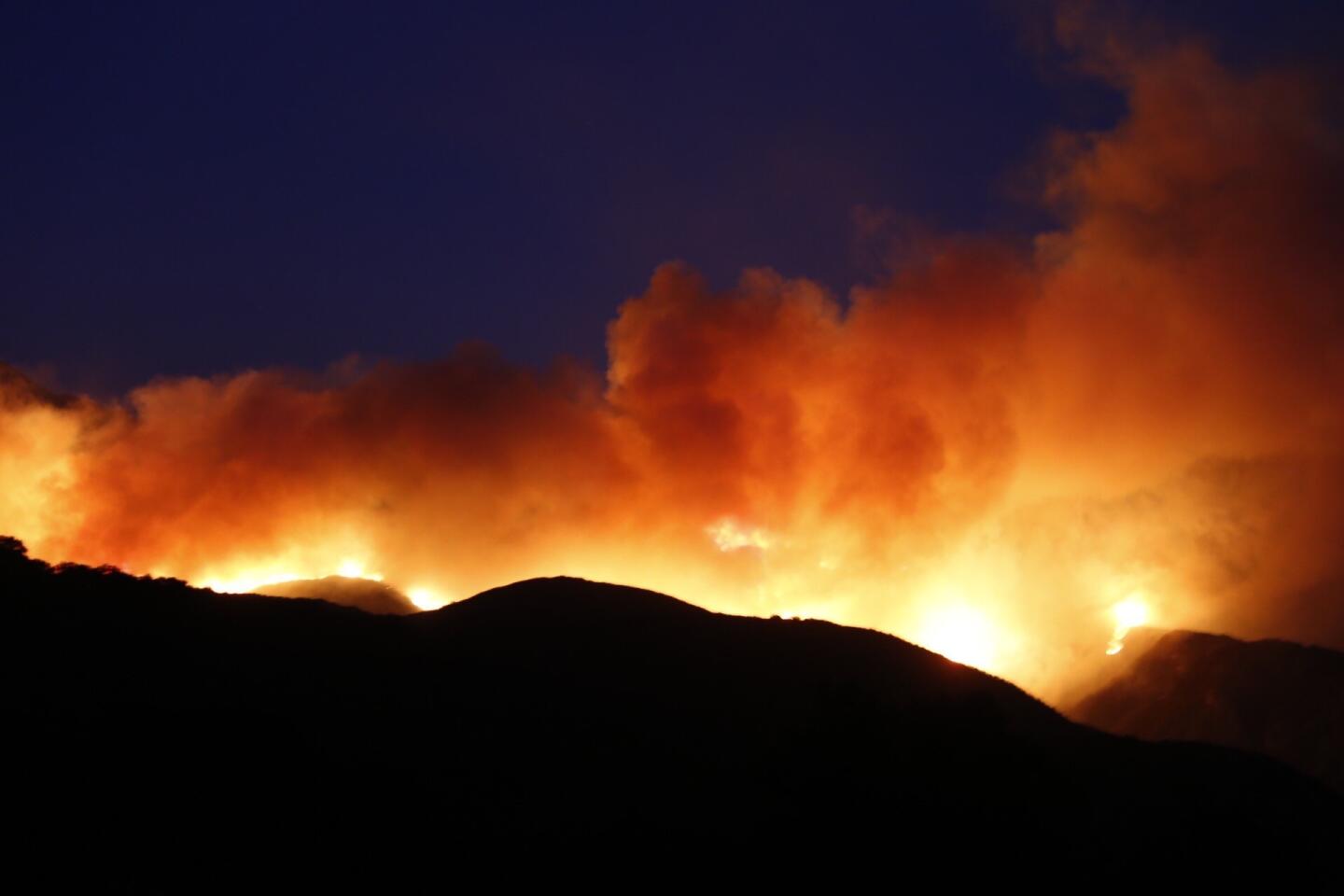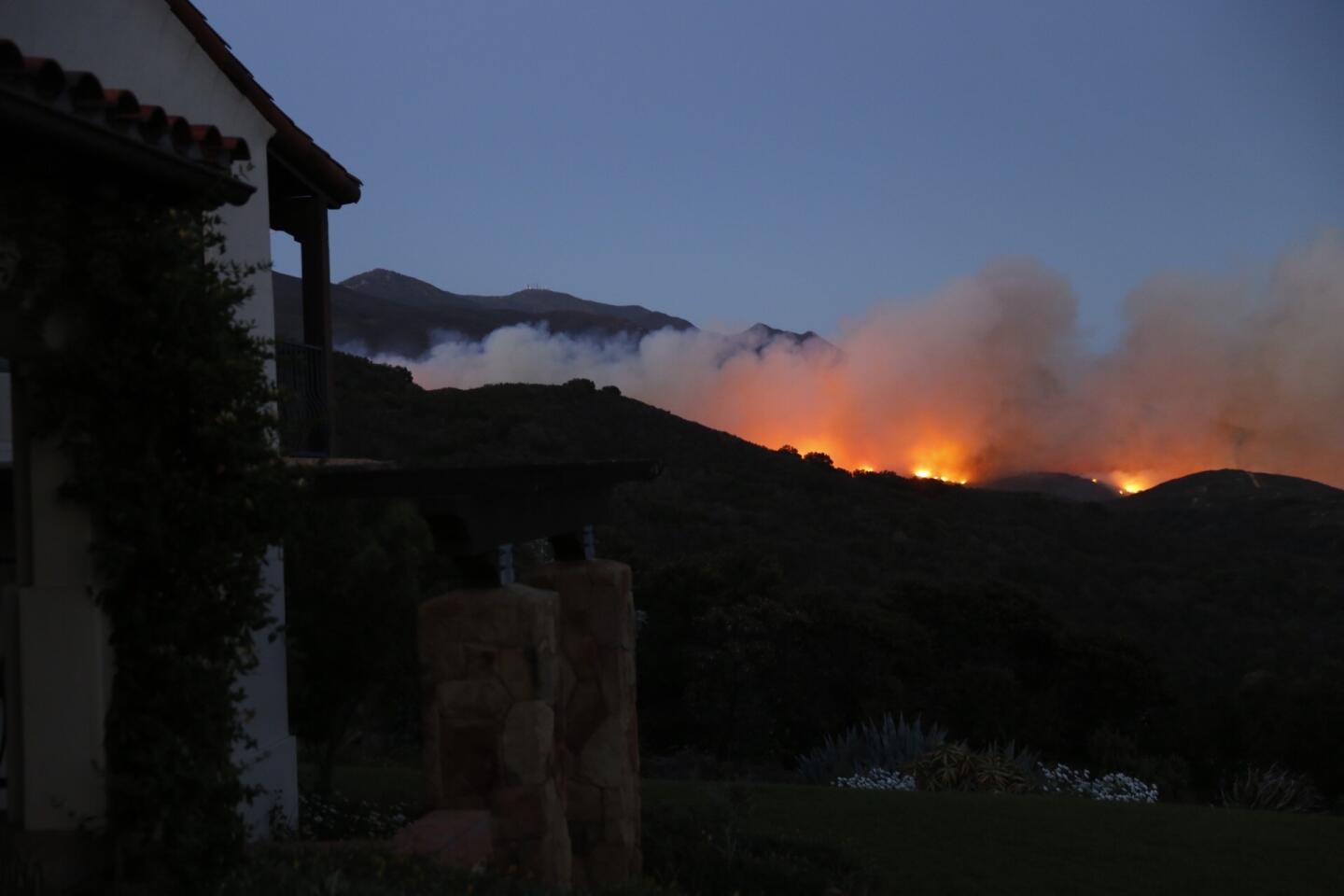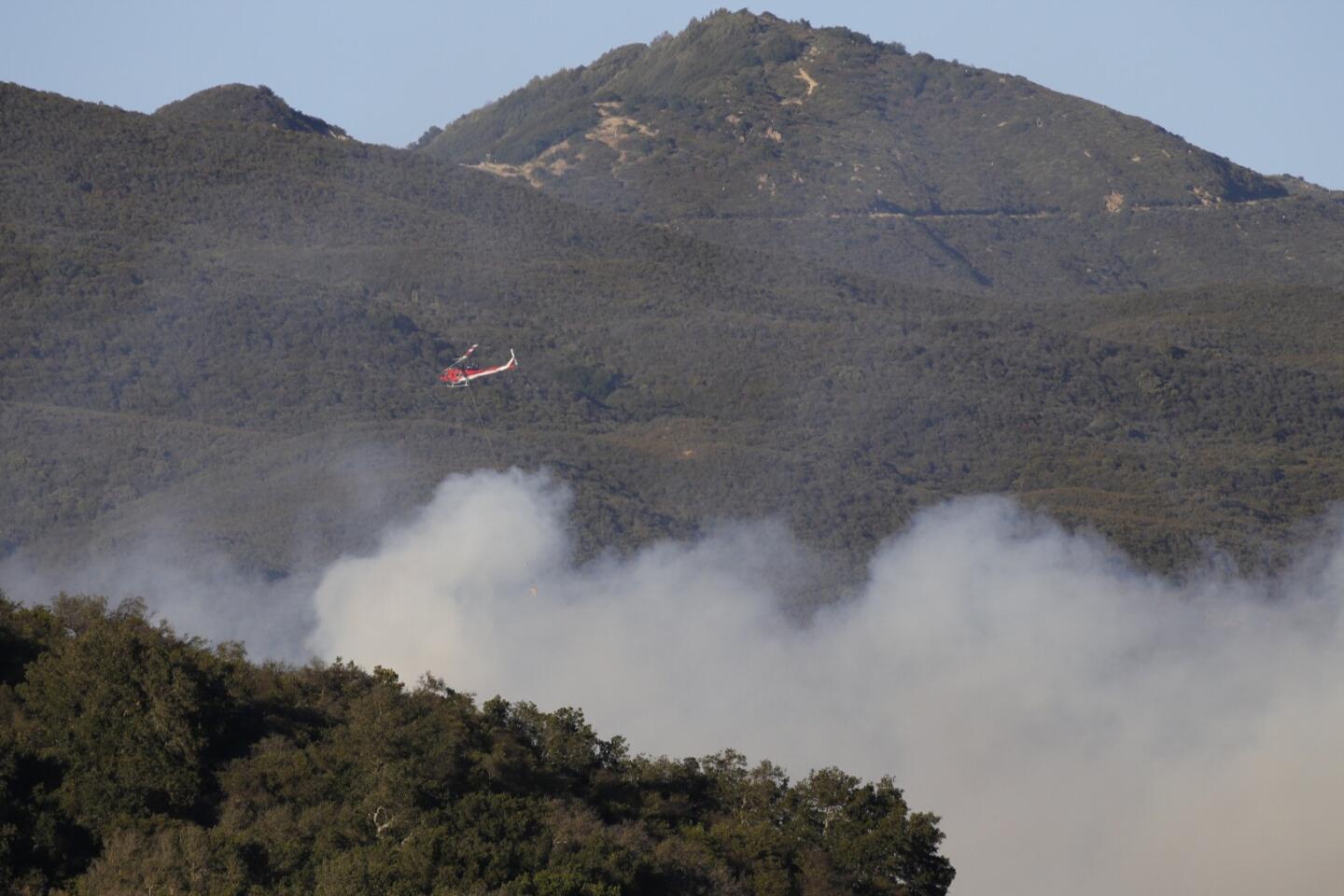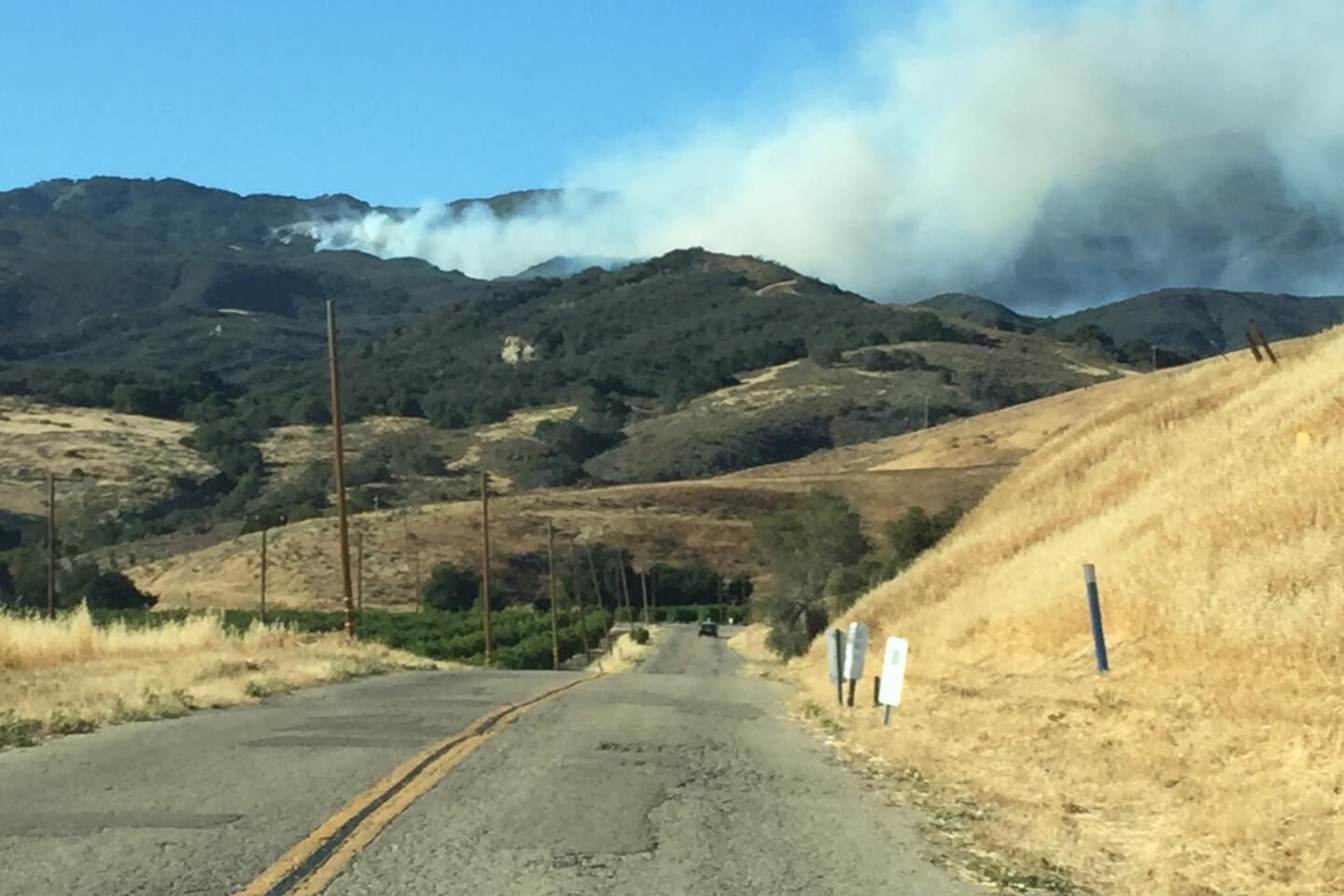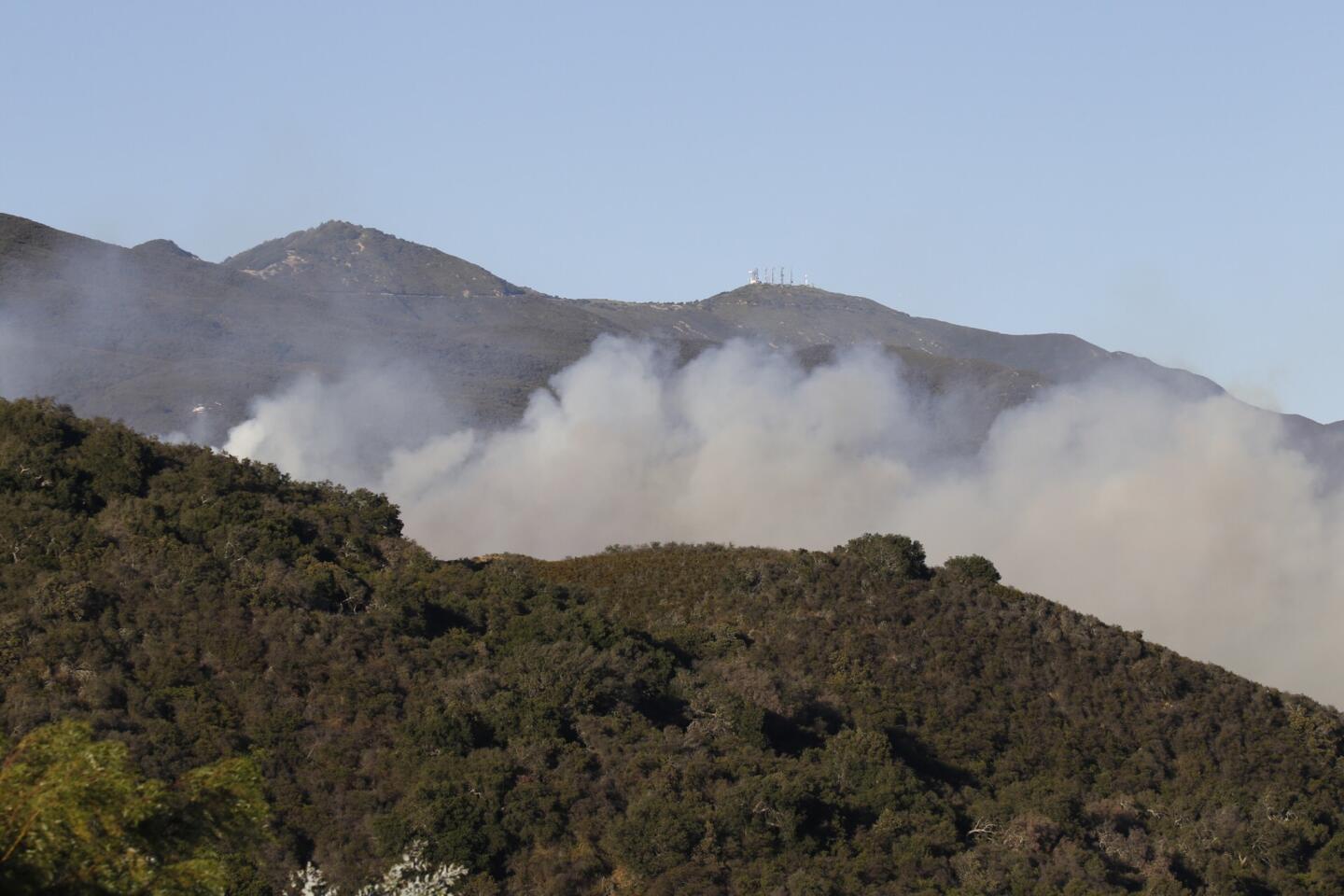Santa Barbara fire bad omen for dangerous California fire season
Reporting from Goleta, Calif. — The fire started smoldering Wednesday afternoon off a curvy mountain road in the coastal hills north of Santa Barbara.
Then, infamous “sundowner” winds started blowing fiercely, and the Sherpa fire suddenly exploded. Authorities frantically shut down the 101 Freeway and evacuated hundreds of homes within a 15-mile path of the blaze, which was being pushed by 50-mph gusts.
The fire was able to move so far because it was racing through overgrown hillsides and canyons that had not burned in more than 60 years.
“Those grasses are like chest-high, really set to go off. They quickly go from green to brown to black,” said Andrew Madsen, a spokesman for Los Padres National Forest. “We may just be seeing the beginning of that.”
The state is in its fourth year of drought, and officials say the Sherpa blaze is a grim omen for what could be a summer and fall of fire.
So far this year, wildfires have burned more than 30,000 acres on state and federal land. That is about equal or slightly higher than the same period in 2015, a particularly destructive year of fire that burned 307,598 acres and hundreds of homes and left at least nine people dead.
“You add a little bit of wind and these continued drought conditions and fires are going to threaten more homes and do more damage and take more resources,” said Daniel Berlant, a spokesman for the California Department of Forestry and Fire Protection.
Firefighters are going to be alert this weekend as a heat wave hits Southern California, bringing triple-digital temperatures through Monday. Forecasters said the conditions will further dry parched brush, heightening the fire risk.
The last heat wave, a few weeks ago, helped fuel a dangerous fire in the Calabasas area that forces thousands to flee their homes and damaged several properties. The blazed exploded after temperatures in the area spiked 10 to 20 degrees.
While Southern California experience a bone-dry winter and spring, parts of Northern California saw significant rain and snow. But those factors don’t necessarily offer a guide to the fire season ahead.
Last year, Northern California was hit much harder by fires than Southern California, even though the south was relatively drier.
In Central California, experts have said heavier rainfall might have actually heightened the fire danger because hillside grass has grown taller. In the Sierra Nevada foothills, a big risk lies with the 29 million trees dying or infested with bark beetles.
The National Interagency Fire Center forecast that the Central Valley might have a more active fire season in 2016, in part because of the worsening beetle infestation.
In Santa Barbara, firefighters and residents were playing a waiting game. For the next few days, they are at the mercy of the sundowner winds.
The sundowner effect can be so destructive because of the violent clash of hot air from the Santa Ynez Mountains and the cool air off the Pacific Ocean.
During the day, the fire has somewhat predictable patterns, following topography. But when the sundowners arrive with sunset, the fire can become unpredictable and grow rapidly.
The fire has burned more than 1,200 acres, but that number was expected to grow significantly Thursday night.
Residents in the area are all too familiar with the devastation these powerful winds can bring. In 1990, in the wake of strong winds, the Painted Cave fire burned 5,000 acres in three hours and destroyed 427 homes.
In 2008, sparked by a smoldering bonfire on a ridge line overlooking Montecito, the 1,940-acre Tea fire damaged 219 homes.
Campers in the area, such as Charlie Hatten at El Capitan State Beach, were among those forced to leave Wednesday night. He knew it wouldn’t be long before the small brush fire fellow campers told him about erupted.
Hatten learned of a mandatory evacuation for El Refugio. “I knew it was only a matter of time before they would come and tell us to leave,” he said.
A park ranger did evacuate them when he and his wife, Elizabeth, were sleeping in their car, seeking refuge from the ash.
“I woke up and the flames looked so close,” he said. “You couldn’t see the moon anymore.”
Elizabeth said she was scared.
“The fire was so bright and orange,” she said. “I couldn’t breathe.”
The couple headed to Santa Barbara Community College, where the American Red Cross had cots and water for the evacuees.
Gayle Robinson, a volunteer for the Red Cross, said the college was the fourth place she called seeking an shelter for evacuees.
“There were a dozen RVs in the parking lot last night,” she said. “This place can hold up to 120 people who are lying down.”
The Hattens, who are from Santa Barbara, said they’re used to the fires that fill the air with smoke every summer.
“They were expecting El Niño and that didn’t quite happen,” Charlie Hatten said. “Fires are going to get worse this season. This weather’s going to make the perfect storm.”
“Stopping a fire is going to be an enormous challenge and we’re definitely bracing those areas for a difficult fire season for years to come,” Berlant said.
The blaze is burning on the western face of the Santa Ynez Mountains, a swath of forest that hasn’t been touched by flames since the devastating 1955 Refugio fire that burned for 10 days, scorching 77,000 acres.
“That’s a result of the increasing urban population living closer to the forest and our need to suppress a fire as soon as we get the call,” Madsen said. “It hasn’t had the natural burn cycle that existed before.”
“It’s just kind of marching around up there,” he added.
A heat wave forecast from the weekend to Tuesday is only going to complicate matters, authorities said. Temperatures are expected to climb into the triple digits, further sapping any remaining moisture from the area.
Song and Fernandez reported from Santa Barbara County; Serna from Los Angeles. Veronica Rocha contributed to this report.
ALSO
West Hollywood plastered with rainbow #ShootBack signs
Navy SEAL accused of deadly stabbing tried ‘to do the right thing,’ attorney says
Forecast for Southern California: Hot this weekend, even hotter Monday
More to Read
Sign up for Essential California
The most important California stories and recommendations in your inbox every morning.
You may occasionally receive promotional content from the Los Angeles Times.
